Here you can browse through all past 3DMM2O News.
Heidelberg University introduced the new class of fellows for the 2025/2026 academic year at the Marsilius Kolleg. Among the selected researchers is Cluster Principal Investigator Prof. Dr. Christine Selhuber-Unkel, who will contribute her expertise to the program’s interdisciplinary approach. Directed by Prof. Dr. Friederike Nüssel and Cluster Principal Investigator Prof. Dr. Michael Boutros, the Marsilius Kolleg serves as Heidelberg’s Institute for Advanced Study. The institute fosters collaboration between the natural, life, and engineering sciences, as well as the humanities, cultural studies, and social sciences. During the fellowship year, the new class will explore questions such as how humans acquire and apply knowledge and how these processes can be modeled in AI language models. Another project will focus on interdisciplinary collaboration in researching traditional crops that could support sustainable food systems.
© Tobias Schwerdt
The 3DMM2O Conference 2026 is now open for registration. The event will take place at Schöntal Monastery in Germany from March 23–26. The annual conference is dedicated to exploring the many facets of 3D additive manufacturing. It will highlight advances in the theory, computation, and design of next-generation 3D materials. Researchers and industry professionals are invited to exchange ideas and explore the emerging technologies that are shaping the future of the field. Alongside the scientific program, the conference will feature the traditional Pister Session, as well as a robust social program that fosters community and collaboration. Registration is open until the end of January, and early-bird rates are available until December 22. This year’s program is chaired by Carsten Rockstuhl and Wolfgang Wenzel from the Karlsruhe Institute of Technology (KIT) and Ulrich Schwarz from Heidelberg University.
In a recent study, a team of scientists, including Cluster Doctoral Researcher Nadine von Coelln, Postdoctoral Researchers Marjan Krstić and Christian Huck, and Principal Investigators Petra Tegeder, Carsten Rockstuhl, and Christof Wöll, developed a multiscale computational model to predict the optical response of chiral surface-anchored metal-organic frameworks (SURMOFs). Their approach integrates quantum-chemical simulations at the unit-cell level with electromagnetic scattering models for entire thin films. The team validated the model using infrared spectroscopy, IR-SNOM, and solid-state VCD, finding excellent agreement between theory and measurements. These results establish SURMOFs as powerful platforms for solid-state VCD and provide a robust tool for designing next-generation chiral MOF materials.
© Fingolo, A. C., et al. (2025), Adv. Funct. Mater., CC BY 4.0.
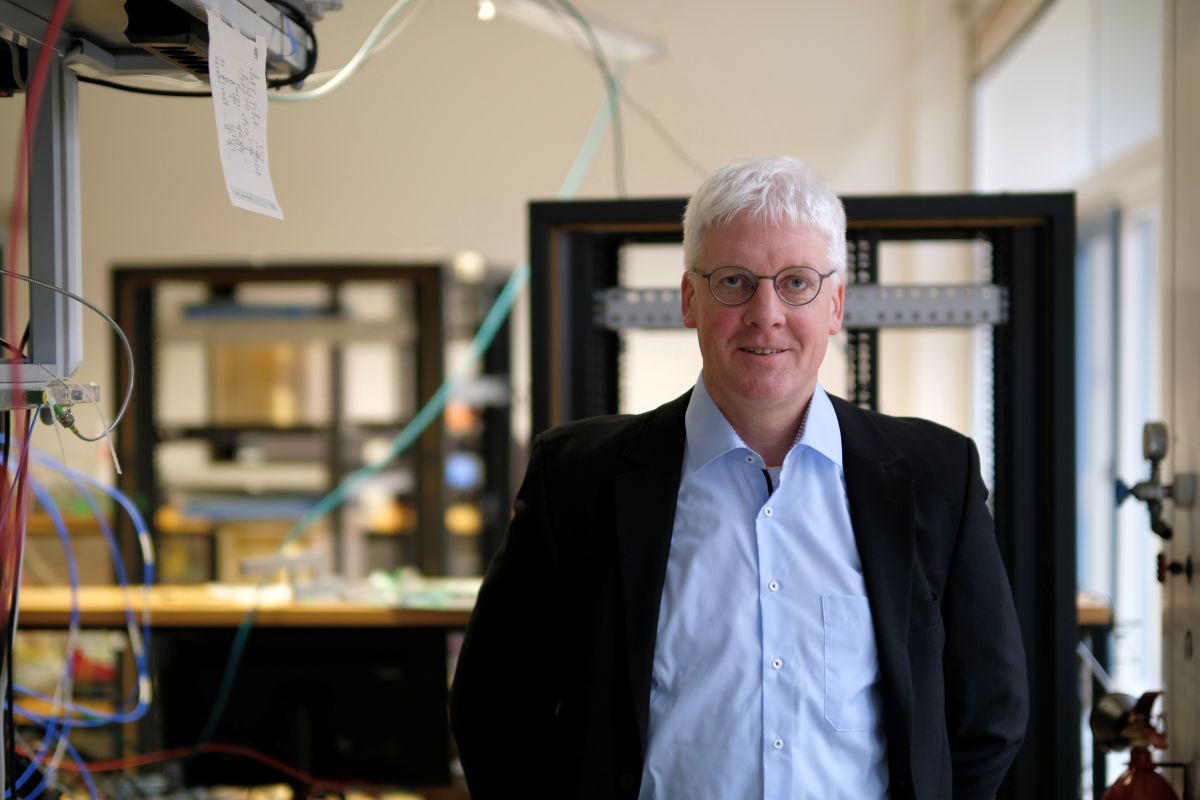
Advancing Sustainable Digital Infrastructure
19.11.2025
Cluster Principal Investigator Christian Koos has been awarded the Karl Heinz Beckurts Prize 2025 for his pioneering contributions to energy-efficient optical communication technologies. His research group develops advanced photonic microchip systems that use light instead of electrical signals to significantly increase data transfer speed and reduce energy consumption. These innovations are crucial for data centers and AI applications that rely on processing large volumes of information. Several start-ups co-founded by Koos are implementing these technologies in industrial applications worldwide. The Karl Heinz Beckurts Prize is awarded annually to researchers whose work demonstrates exceptional scientific excellence and clear economic significance.This prestigious award highlights the significant impact and practical relevance of his scientific achievements.
A new study, including Cluster Alumnus Marcus Dodds and PI Eva Blasco, has developed a light-based 3D printing method that can fabricate complex structures from redox-active carbazole polymers. These printed materials remain fully electrochemically switchable, displaying reversible color and charge changes throughout their entire architecture. Using in situ spectroelectrochemistry, the researchers tracked these redox processes within multilayer 3D objects. The study demonstrates how precise light-based fabrication can be combined with electrochemical functionality to create fully addressable 3D material systems. This advance paves the way for future electrochromic devices, adaptive optics, sensors, and printed optoelectronic technologies.
© Delavier et al., Adv. Funct. Mater., 2025, e18546, CC BY 4.0
Cluster Principal Investigator Prof. Dr. Peer Fischer was awarded a prestigious ERC Synergy Grant from the European Research Council. The international project, titled DNA4RENOMS, aims to develop light-responsive, reconfigurable nano-opto-mechanical systems using advanced DNA nanotechnology. The teams will employ DNA as a programmable construction material to create nanoscale machines that can dynamically restructure themselves and change their mechanical properties with molecular precision. These innovative nanoscale machines aim to enable sustainable self-organization and future technologies such as artificial muscles or ultra-precise force sensors small enough to operate inside living tissues. The ERC will support the collaborative research effort with substantial funding for the participating groups over six years.
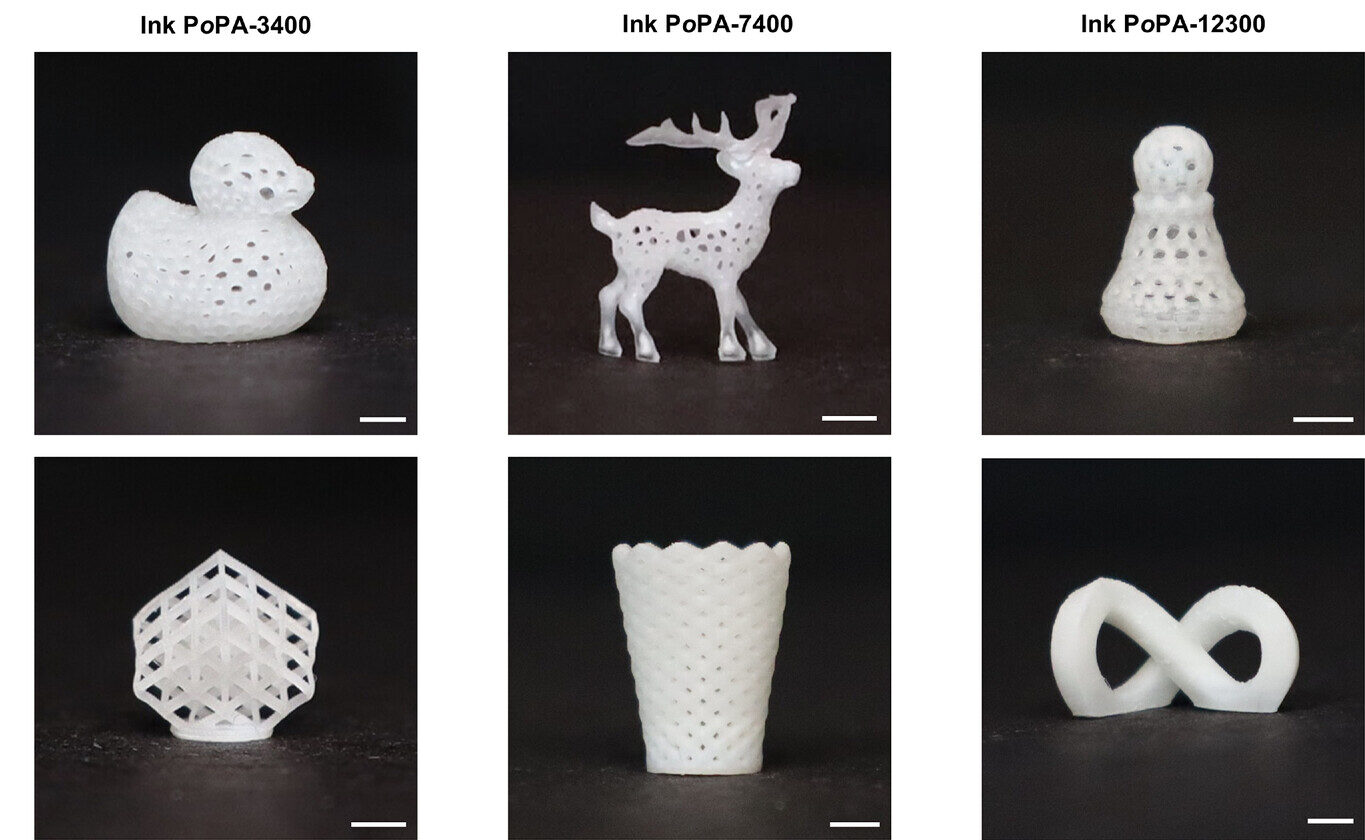
4D Printing That Can Shrink and Regrow
06.11.2025
In a new Cluster publication, Doctoral Researchers Johannes Markhart, Philipp Mainik, Pia S. Klee, and Principal Investigator Eva Blasco demonstrate a novel 4D printing concept based on self-immolative polymers. The researchers show that, when exposed to a chemical trigger, 3D-printed structures can shrink and regrow reversibly due to rapid depolymerization and subsequent repolymerization within the material. These transformations occur at room temperature, enabling the printed object to regain much of its original shape and mechanical properties. This study broadens the possibilities of dynamic material programming in additive manufacturing and illustrates how chemical control can introduce reversible functionality into 4D-printed systems.
© Markhart et al., Adv. Funct. Mater. 2025, e20642, CC BY
A team of scientists, including Cluster Doctoral Researchers Erik Jung and Clara Vazquez-Martel and Principal Investigators Eva Blasco and Wolfram Pernice, has developed a new plug-and-play fiber interface for photonic chips. The researchers used two-photon polymerization to 3D-print optical couplers and alignment structures directly onto the chip. This enables a standard MTP multifiber connector to be plugged in without any active alignment. This connection achieves extremely low optical loss and remains stable across the entire telecom wavelength range. This breakthrough overcomes a significant challenge in scalable photonic packaging and is a crucial step toward mass-producible photonic AI accelerators and neuromorphic processors.
© Jung et al., Sci. Adv. 2025, eadz1883, CC BY-NC 4.0
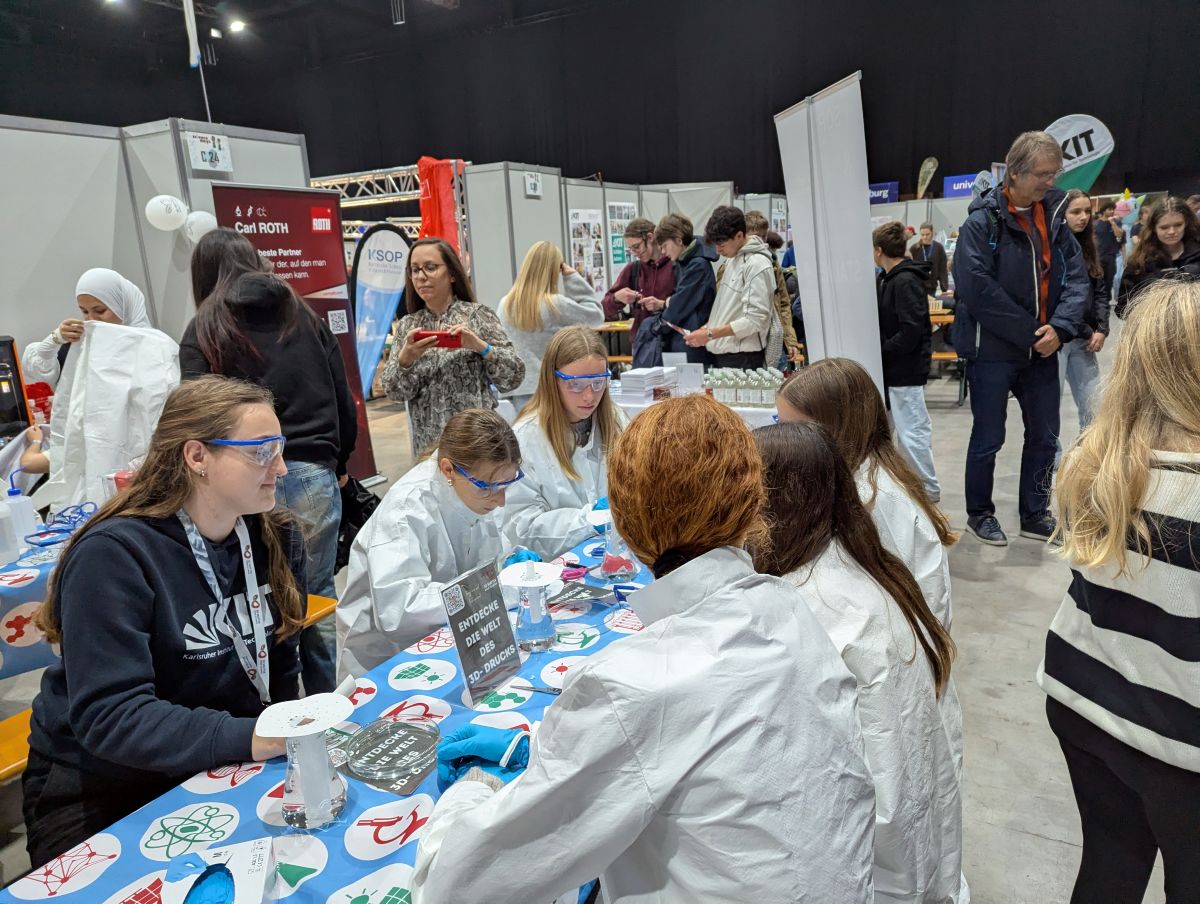
Science Days 2025 at Europa-Park
03.11.2025
From Thursday to Saturday, our team presented interactive experiments at the 25th annual Science Days at Europa-Park. We encouraged visitors to explore science through creativity and hands-on activities. At our booth, participants built their own lava lamps and learned how colors can be separated using paper chromatography. A key attraction was the 3D printer provided by Carl Roth GmbH + Co. KG, A key attraction was the 3D printer provided by Carl Roth GmbH + Co. KG, which sparked conversations about materials, design, and innovation. Throughout the event, our Doctoral Researchers from the Cluster and the Karlsruhe School of Optics & Photonics (KSOP) guided visitors and shared insights into scientific research. These three days once again demonstrated how inspiring and fun science can be for people of all ages.
A new study involving 3DMM2O Doctoral Researcher Jan Hobich, Postdoctoral Researchers Florian Feist and Paul Somers, and Principal Investigators Eva Blasco and Christopher Barner-Kowollik presents a dual-wavelength photochemical approach that enables precise spatial and temporal control over polymer network formation. Using two light-sensitive molecules that react only when exposed to both 375 and 430 nm light, the team produced defined microscale structures in a custom dual-laser lithography setup. This study paves the way for next-generation additive manufacturing by demonstrating the potential of wavelength-encoded control to create complex material architectures with exceptional precision.
© Hobich et al., Angew. Chem. Int. Ed. 2025, e202518815, CC BY 4.0
On October 9, the International Department celebrated its 25th anniversary with a festive event that brought together the entire ID community, including our 3DMM2O Cluster. The evening featured opening remarks by KIT President Prof. Dr. Jan S. Hesthaven; Jörg Krauss, representing the State Ministry of Baden-Württemberg; and Benjamin Bauer, representing the City Council of Karlsruhe. There were also inspiring keynote talks by Prof. Dr. Dr. h.c. Michael Kaschke and Prof. Dr. Antje Boetius. The celebration also honored the achievements of newly graduated Doctoral Researchers: Clara Adam, Julian Brückel, Marcus Dodds, Magdalena Jung, Elisa Genthner, and Christina Schlagheck. The festive program, moderated by Kristina zur Mühlen, highlighted the department’s long-standing commitment to education and international collaboration.
© Marc Feix Photography
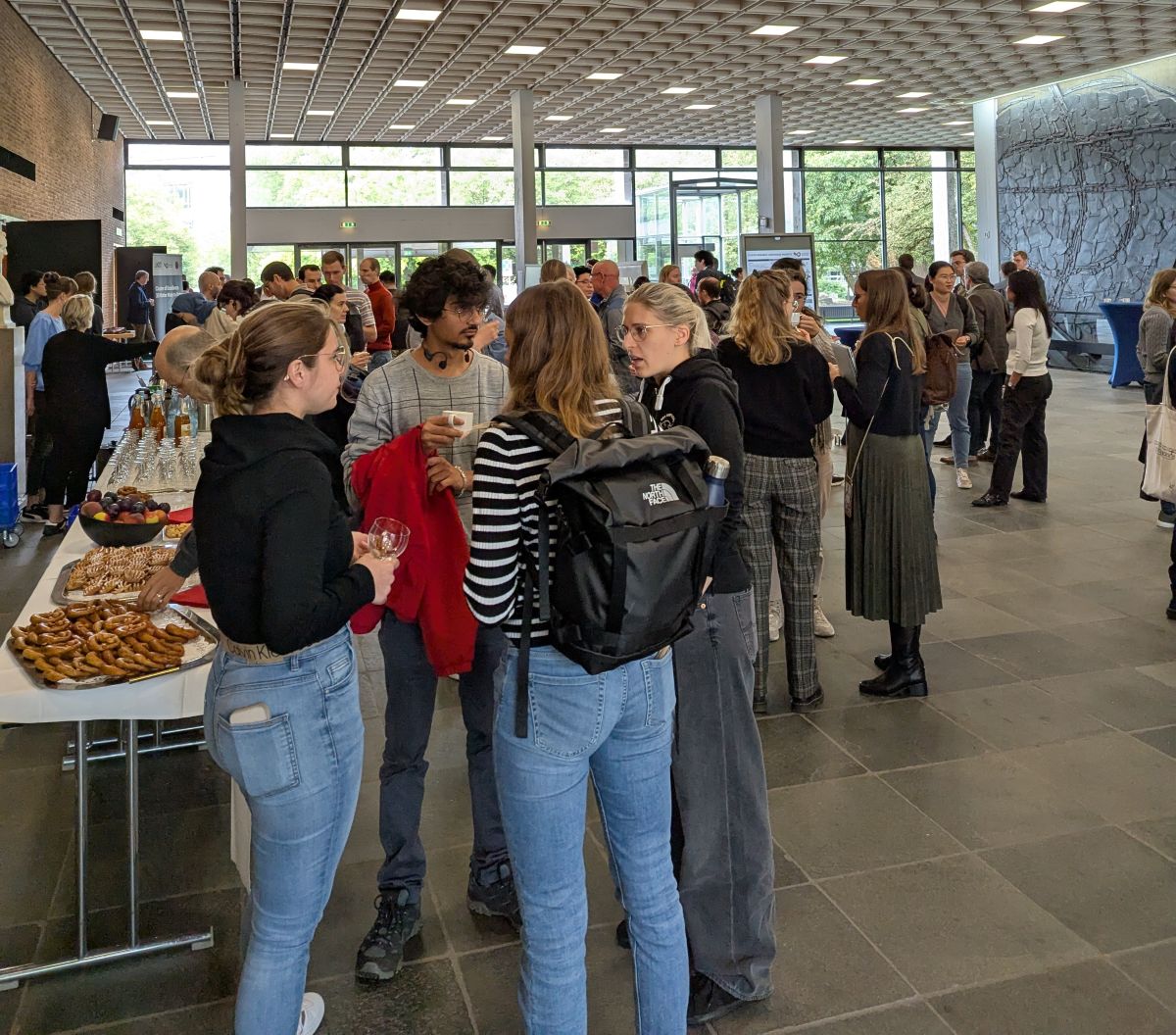
01.10.2025
On September 30, 2025, our members gathered at the University of Heidelberg for this year’s Summer Cluster Meeting. The program included a general assembly with an overview of the upcoming 3DMM2O Conference 2026: Frontiers in Theory, Computation, and Design of 3D Materials, as well as scientific presentations. A newly introduced interactive smartboard session offered a dynamic way to exchange ideas across research areas. During coffee breaks, lively discussions continued, bringing fresh perspectives to the day. The focus was on the structures and projects of the second funding period, providing common ground for discussion and planning. The meeting also offered opportunities for networking and informal exchanges, strengthening connections within the community. It concluded with a sense of collaboration and excitement for the projects ahead.
A new study by Cluster Doctoral Researchers Chantal Barwig, Malin Schmidt, Annabelle Sonn, Scientist Irene Wacker, as well as Principal Investigators Rasmus R. Schröder and Christine Selhuber-Unkel, explores a new type of microscale actuator made from soft, responsive hydrogels. These actuators can switch between two stable states without continuous energy input, a property known as bistability. The team created 3D microstructures that can be precisely controlled using two-photon polymerization by combining thermoresponsive and light-responsive components. This innovation opens new opportunities for energy-efficient soft robotics, biomedical applications, and reconfigurable microfluidic systems.
©Barwig et al., Adv. Intell. Syst. 2025, CC BY
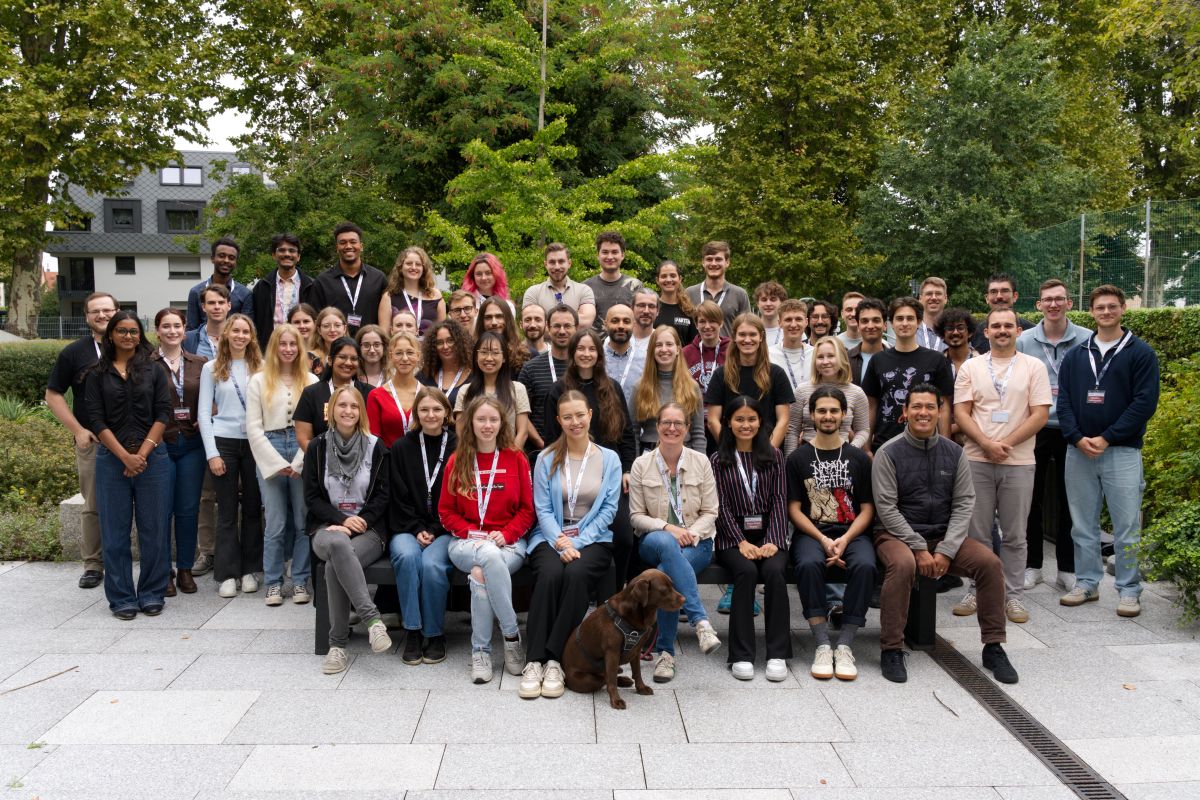
Recap HEiKA Summer Science Academy 2025
17.09.2025
From September 7–11, the HEiKA Summer Science Academy 2025 brought together master’s and final-year bachelor’s students at the Bildungshaus St. Bernhard in Rastatt. The academy was organized by the Heidelberg-Karlsruhe Strategic Partnership HEiKA in partnership with our Cluster 3DMM2O and the Flagship Initiative Engineering Molecular Systems of Heidelberg University. Participants attended hands-on workshops led by top researchers who covered topics such as biofabrication, responsive materials, stem cell dynamics, cancer evolution, and 3D lithography. The program provided a unique, immersive experience that fostered collaboration, exchange, and innovation at the intersection of molecular systems and 3D engineering.
A new study, including Cluster Doctoral Researchers Maike Schliephake and Yan Liu and PIs Prof. Dr. Jasmin Aghassi-Hagmann and Prof. Dr. Pavel Levkin, explores the use of fluorescent metal-organic framework (MOF) thin-film arrays as surface-based sensors. They created stable, easy-to-use devices by directly patterning fluorescent dyes onto flat MOF films, overcoming the drawbacks of MOF suspensions. These arrays can track pH levels within the biological range (5–9) and detect disease-related molecules, such as dopamine. Their robust design enables multiplexed measurements and integration into lab-on-a-chip systems, creating opportunities in healthcare, environmental monitoring, and food safety.
© Wang et al., Small 2025, CC BY
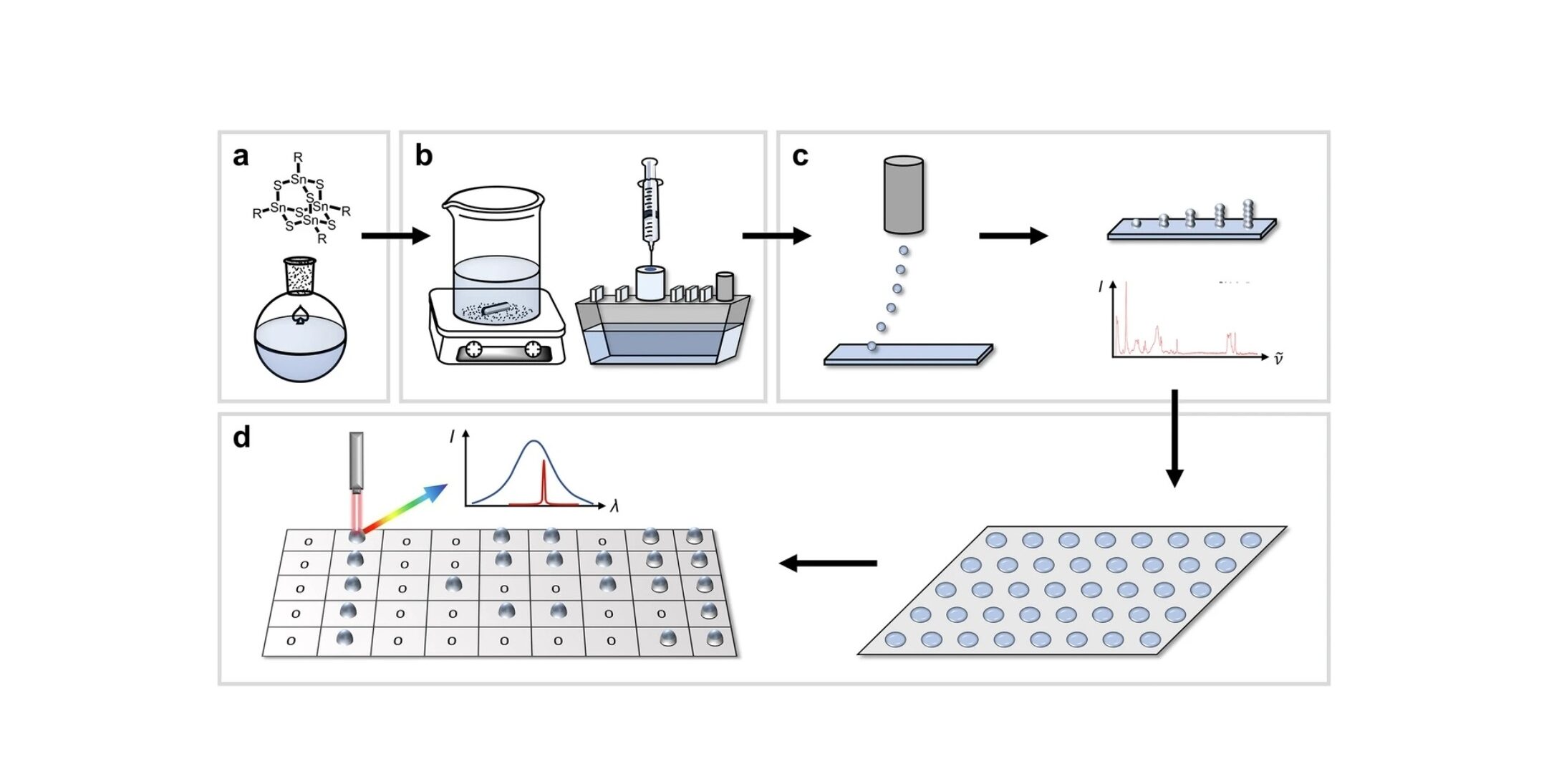
Printing White Light for Future Data Storage
03.09.2025
A new study in Communications Materials — including Cluster Postdoctoral Researcher Nils Rosemann and Principal Investigators Jasmin Aghassi-Hagmann and Stefanie Dehnen — demonstrates the first successful inkjet printing of adamantane-type organotin sulfide clusters without altering their molecular identity. These clusters exhibit unusual optical properties, producing either white light or frequency doubling depending on their structure. The researchers overcame the longstanding challenges of instability and poor solubility by combining phenyl groups, which improve optical performance, with alkyl chains, which improve solubility. This breakthrough paves the way for printable, reusable, and thermally stable optical data storage materials.
© Nier et al., Communications Materials, 2025, CC BY 4.0
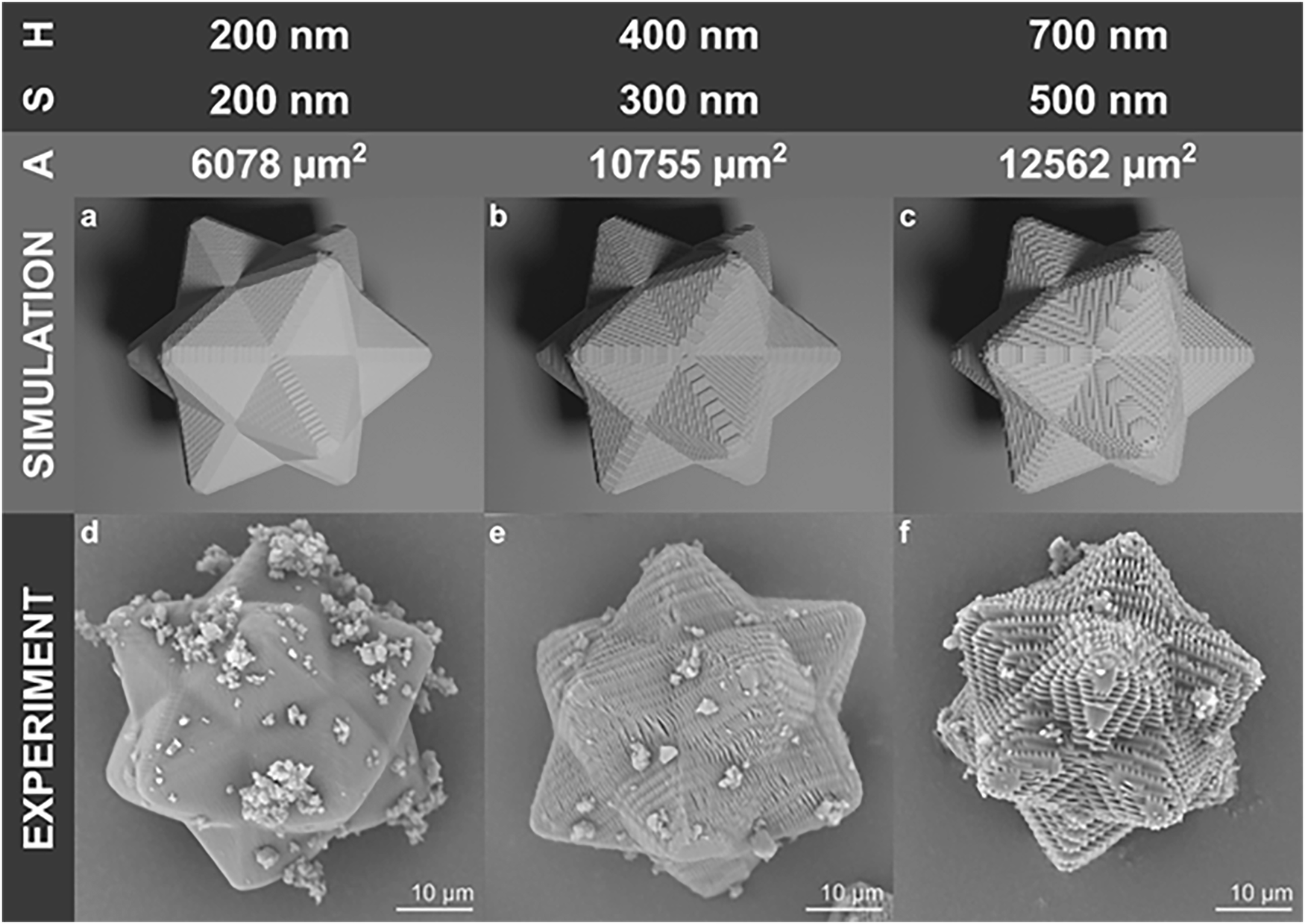
Designing the Future of Lung Medicines
27.08.2025
A recent study, including Cluster Doctoral Researcher Alexander Berkes, Alumnus Pascal Kiefer and PI Martin Wegener, explores how the geometry of carrier particles affects drug delivery in dry powder inhalers. The team used multi-photon 3D laser printing to create millions of microparticles with different shapes and surface textures. The spiked Pharmacone design performed best, enabling the highest fraction of respirable drug particles. Although these particles are not intended for inhalation, this approach suggests the possibility of future biocompatible, precision-engineered carriers for more effective lung therapies.
© Wostry et al., Communications Materials 2025, CC BY 4.0
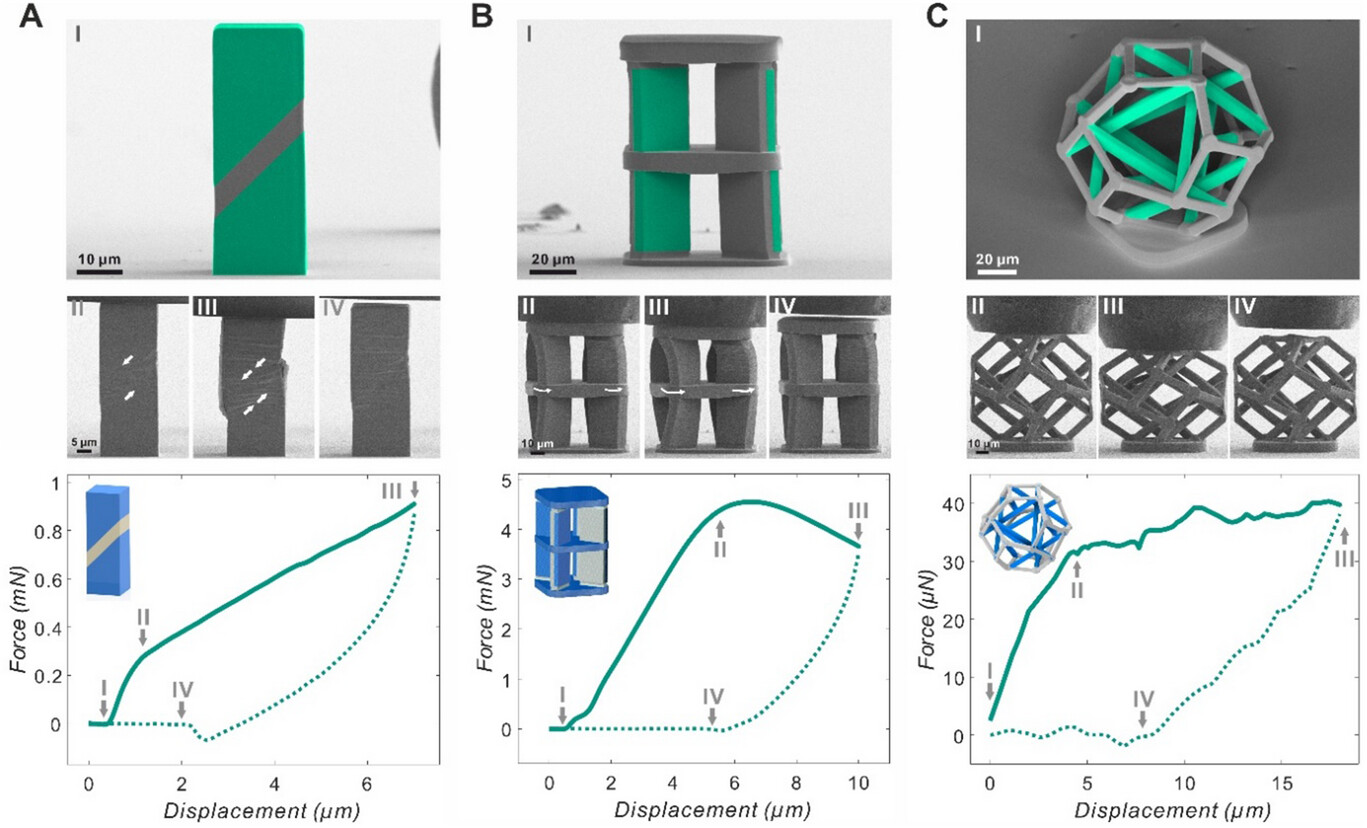
New Opportunities in 3D Microfabrication
22.08.2025
Scientists, including Cluster Alumna Tugce Nur Eren, Doctoral Researcher Jonathan L. G. Schneider, Postdoctoral Researcher Florian Feist, and PIs Martin Wegener, Jens Bauer, and Christopher Barner-Kowollik, have developed a single-component resin for 3D microprinting that enables structures with a wide range of mechanical properties in a single step. Unlike conventional resins, it does not require photoinitiators or additional crosslinkers. By adjusting laser power and scan speed, both very soft and flexible structures and very stiff and rigid structures can be produced. This breakthrough opens new opportunities in soft robotics, microfluidics and biofabrication.
© T. N. Eren, et al., Adv. Funct. Mater., 2025, CC BY
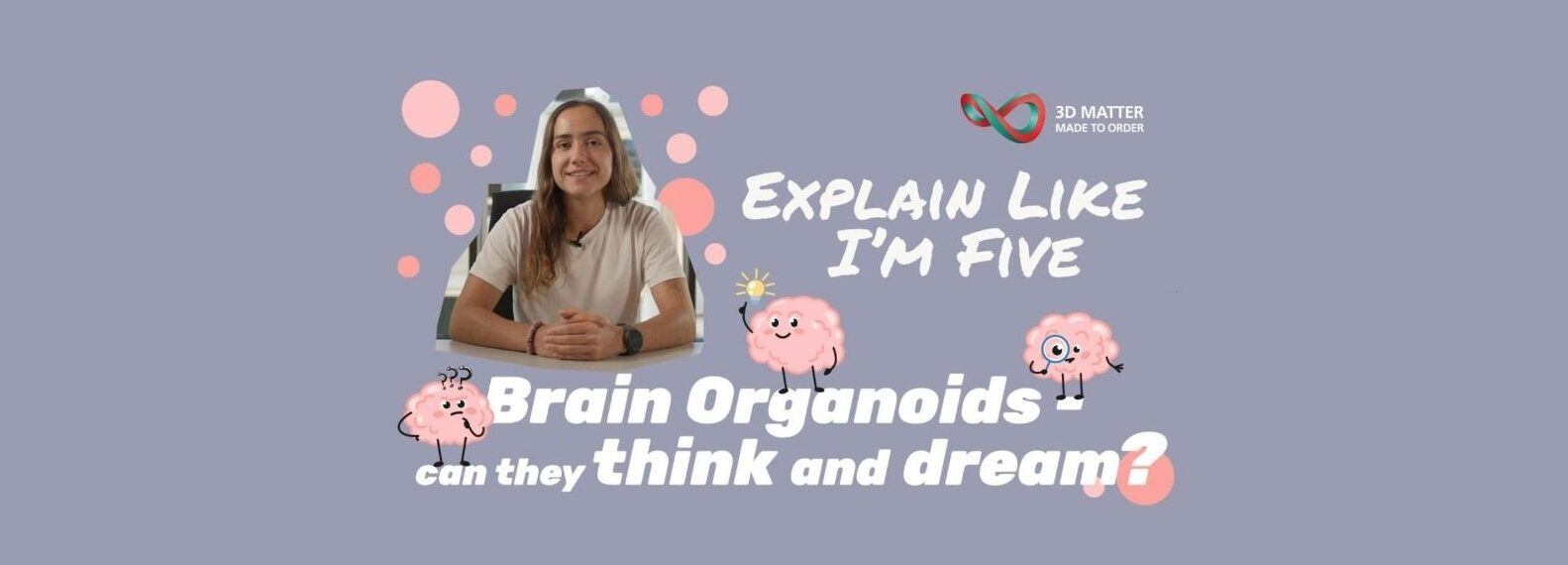
Brain Organoids – Could They Cure Diseases?
19.08.2025
A new episode of our Explain Like I’m Five series is now live, exploring the fascinating world of human brain organoids. Lízia Branco, a Cluster Doctoral Researcher at the Karlsruhe Institute of Technology (KIT), demonstrates how lab-grown organoids made from stem cells can be used to study brain development and neurological disorders, eliminating the need for animal testing. Lízia combines her background in physics with neuroscience to apply imaging, data analysis, and machine learning to reveal how genetic and environmental factors influence the brain. The episode also discusses whether AI could play a role in detecting and helping to “fix” brain disorders.
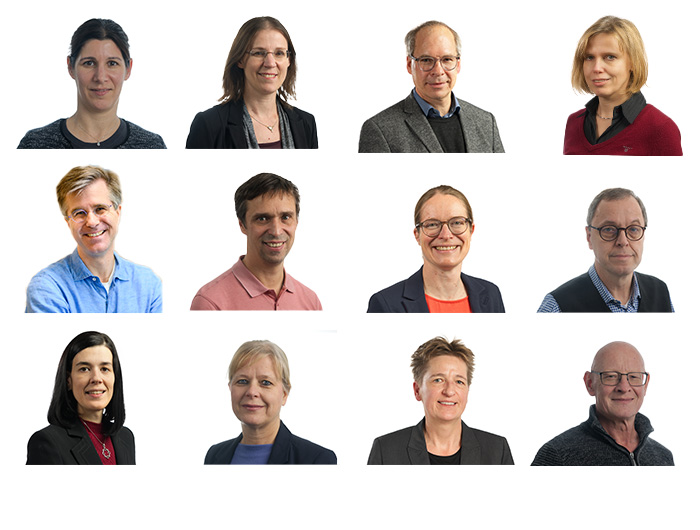
Newly Elected Coordinating Committee
08.08.2025
The Coordinating Committee (CC) of the Cluster has been newly elected on July 31, 2025. Comprising six Principal Investigators (PIs) each from Karlsruhe Institute of Technology (KIT) and Heidelberg University, including members of the Executive Board, the CC oversees strategic decisions such as cluster membership, PI composition, fund allocation, and systematic evaluation of projects, Thrusts, PIs, and overall Cluster performance. Additionally, representatives from the KIT presidential committee and Heidelberg University’s president’s office attend to ensure seamless communication with university leadership. The newly elected CC will focus on implementing the objectives and measures outlined in the follow-up proposal.
A research team including Cluster Postdoctoral Researcher Chatrawee Scheiger and Mariana Kozlowska, and Cluster PIs Christof Wöll and Wolfgang Wenzel has demonstrated the first MOF thin film with true metallic conductivity. Using AI-guided robotic synthesis, the team fabricated highly ordered Cu₃(HHTP)₂ thin films with conductivities exceeding 200 S/m at room temperature. This metallic behavior is linked to Dirac cones in the material’s hexagonal structure, which enables highly mobile charge carriers. This breakthrough opens new possibilities for MOFs in electronics, sensing, energy storage, and quantum materials.
© Scheiger et al., Materials Horizons, 2025, CC BY 3.0
In this new publication, Cluster Doctoral Researchers Philipp Mainik and Jonathan L. G. Schneider, Principal Investigators Martin Wegener and Eva Blasco, along with Christoph A. Spiegel, present a new class of deep eutectic inks (DEIs) for multiphoton 3D laser microprinting. These inks enable the production of highly elastic and responsive microstructures with high spatial resolution and mechanical tunability. The innovative formulation combines excellent printability with minimal crosslinking, overcoming the limitations of traditional soft material inks. This advancement opens new possibilities for applications in soft robotics, bioengineering, photonics, and flexible microdevices.
© Mainik et al., Adv. Mater. 2025, CC BY 4.0
We congratulate our Cluster Principal Investigator, Prof. Dr. Stefanie Dehnen, on her election to the Senate of the Deutsche Forschungsgemeinschaft (DFG). She will take office in January 2026 as one of six newly elected members. The DFG Senate is the central scientific body responsible for major decisions regarding research funding, as well as the structure of evaluation, review, and decision-making procedures. This appointment recognizes her exceptional contributions to molecular chemistry and science policy. To learn more about her work and scientific journey, watch our latest Women in Science video feature released earlier this year.
Two Principal Investigators from our Cluster have secured ERC Advanced Grants, which are prestigious research funds awarded by the European Research Council. With his project PICNIC, Wolfram Pernice explores how probabilistic photonic circuits can enable ultrafast and energy-efficient optical computing. Jana Zaumseil’s project, SCALE-NT, focuses on the sustainable processing of semiconducting carbon nanotubes with biodegradable materials for applications such as optical sensors and thermoelectric generators. The ERC Advanced Grant supports accomplished researchers as they develop ambitious, high-impact projects at the forefront of their fields.
© Tobias Schwerdt
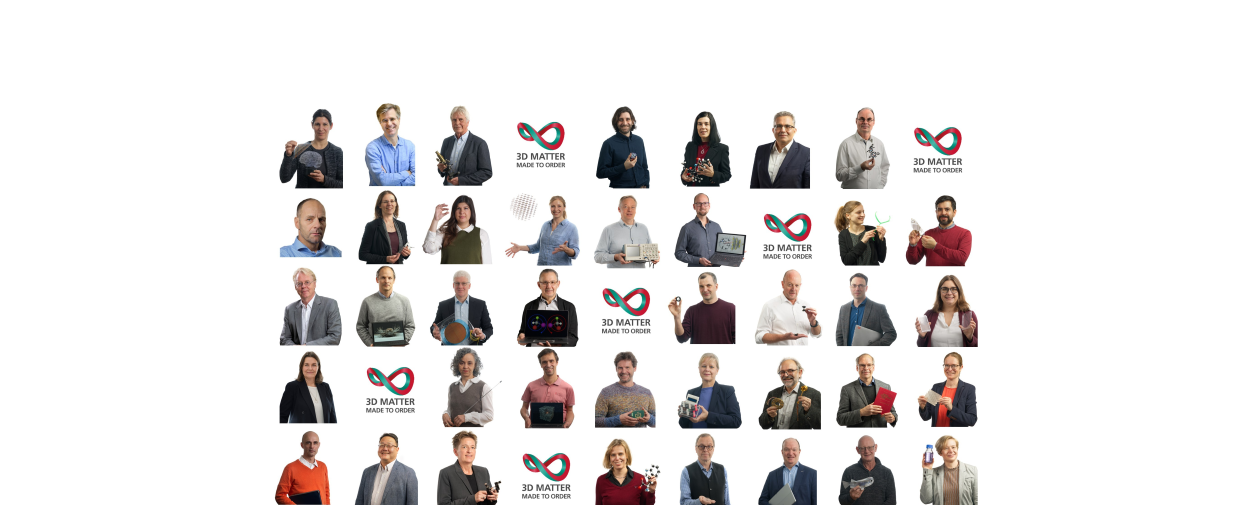
3DMM2O Secures Second Funding Period
23.05.2025
We are proud to announce that our Cluster of Excellence 3D Matter Made to Order (3DMM2O) has secured funding for a second period through the German Excellence Strategy. Following the submission of our renewal proposal in August 2024 and a successful on-site evaluation in January 2025, this achievement represents a significant milestone in our ongoing commitment to advancing 3D Additive Manufacturing at the intersection of technical and life sciences. 3DMM2O will now begin on a new chapter filled with innovative research projects and interdisciplinary collaboration. We extend our heartfelt thanks to all who made this success possible.
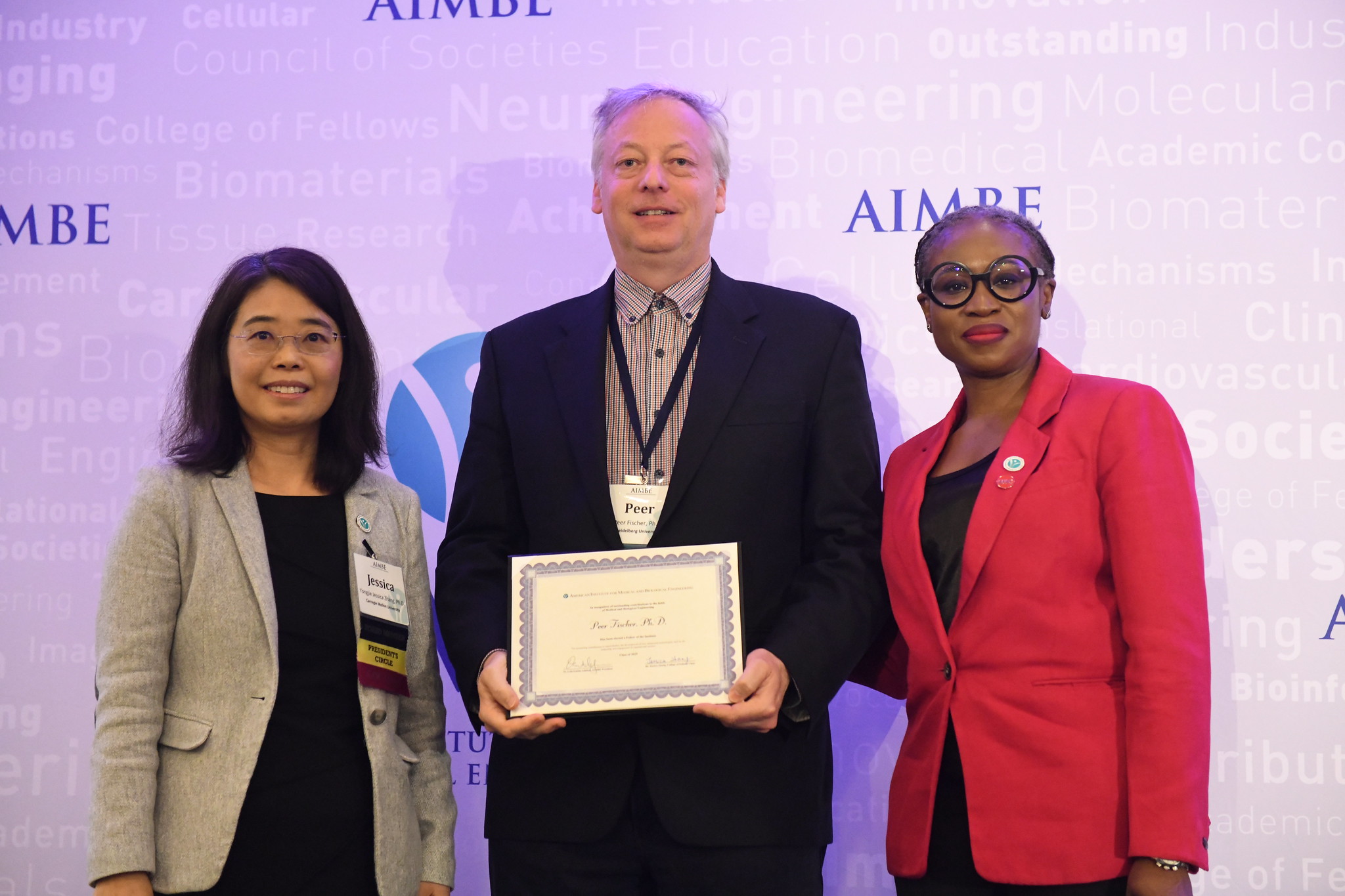
Congratulations to our Cluster Principal Investigator, Prof. Dr. Peer Fischer, on being elected a Fellow of the American Institute for Medical and Biological Engineering (AIMBE)! This prestigious honor recognizes the top two percent of engineers for their exceptional contributions to the field of biomedical engineering. Professor Fischer is recognized for his pioneering work in nanorobotics and ultrasound technologies, as well as for his efforts to bridge the gap between fundamental research and practical applications. Prof. Fischer leads a research group at the Max Planck Institute for Medical Research and holds a professorship at Heidelberg University.
© AIMBE

Tunable Hydrogels for 4D Printing
21.05.2025
In a new publication, Principal Investigator Eva Blasco, Cluster Alumnus Christoph Spiegel, and H. B. Duc Tran developed a new class of smart hydrogel inks based on OEGMA for 4D microprinting. They created materials with tunable thermoresponsive behavior across a broad temperature range (33–66 °C) by combining OEGMA with MEO2MA and HEMA, surpassing traditional systems. Using two-photon laser printing, the researchers produced precise 3D microstructures that change shape predictably and reversibly with temperature. This breakthrough opens new possibilities for soft microrobotics, smart sensors, and biomedical microdevices.
A new review article featuring Cluster Postdoctoral Researcher Yi Chen and PI Martin Wegener, published in Nature Reviews Physics, explores the concept of nonlocality in metamaterials and metasurfaces. Unlike traditional materials, which have local responses, nonlocality enables a material’s behavior to depend on fields at multiple locations. This unlocks novel ways to control wave propagation across optics, acoustics, elasticity, and diffusion. The review highlights surprising phenomena, like unusual wave dispersion, long-range static effects, and spatially tailored responses in thin metasurfaces. These effects can be engineered using classical building blocks, paving the way for advanced applications in compact, wave-based technologies, like mobile devices and optical neural networks.
Are you curious about turning ideas into real, usable objects? Our 2025 Summer 3D Printing Workshop for Girls is the perfect place to start! This free, hands-on workshop will be held on August 6–7 at the ZEISS Innovation Hub on the KIT Campus North in Karlsruhe. Girls and young women aged 13 to 19 are invited to attend and learn about the exciting world of 3D printing. Participants will learn to sketch ideas, model them in Fusion 360, and bring their designs to life with 3D printers. Whether you dream of creating keychains, phone stands, or something entirely unique, this is your chance to bring your imagination to life.
Pascal Friederich, our Cluster PI from the Karlsruhe Institute of Technology (KIT), has been awarded the Manfred Fuchs Prize 2025 by the Heidelberg Academy of Sciences. The €10,000 prize recognizes early-career researchers in Baden-Württemberg who bridge disciplines and drive scientific innovation. Friederich’s research combines artificial intelligence with materials science to accelerate the discovery and simulation of new materials, which is crucial for green energy technologies and pharmaceutical innovations. His data-driven approach is helping redefine the design of future materials.
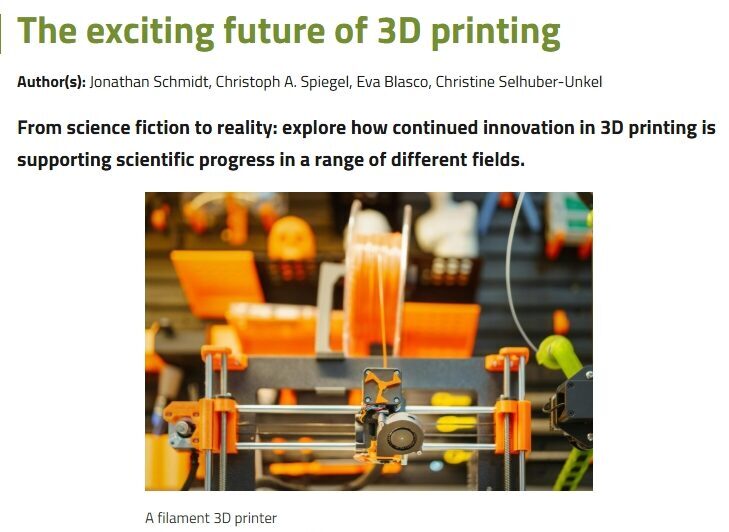
What was once a science fiction concept is now transforming modern research: 3D printing. In a recent Cluster article, Jonathan Schmidt, alumnus Christoph A. Spiegel, and principal investigators (PIs) Eva Blasco and Christine Selhuber-Unkel explore how light-based 3D printing enables groundbreaking advances, from cancer research to smart materials that adapt and self-heal. The article, published in Science in School, also highlights sustainable innovations, such as bio-based photoresins made from microalgae. These developments represent a significant step toward more precise, sustainable manufacturing at the micro- and nanoscale.
In a new Cluster publication, Doctoral Researchers Pascal Rietz, Sebastian Kalt, Jonathan Ludwig Günter Schneider, Postdoctoral Researcher Paul Somers, Alumnus Pascal Kiefer, and PI Martin Wegener have developed a groundbreaking approach for 3D laser nanoprinting. They combined two-step absorption with dynamic multi-focus control, enabling high-resolution printing with up to 31 simultaneous laser foci. This method significantly improves the speed and scalability of 3D nanoprinting by replacing slow single-focus writing with simultaneous multi-focus control. Using compact continuous wave lasers and low power thresholds, they provide a cost-effective alternative to conventional femtosecond laser-based systems.
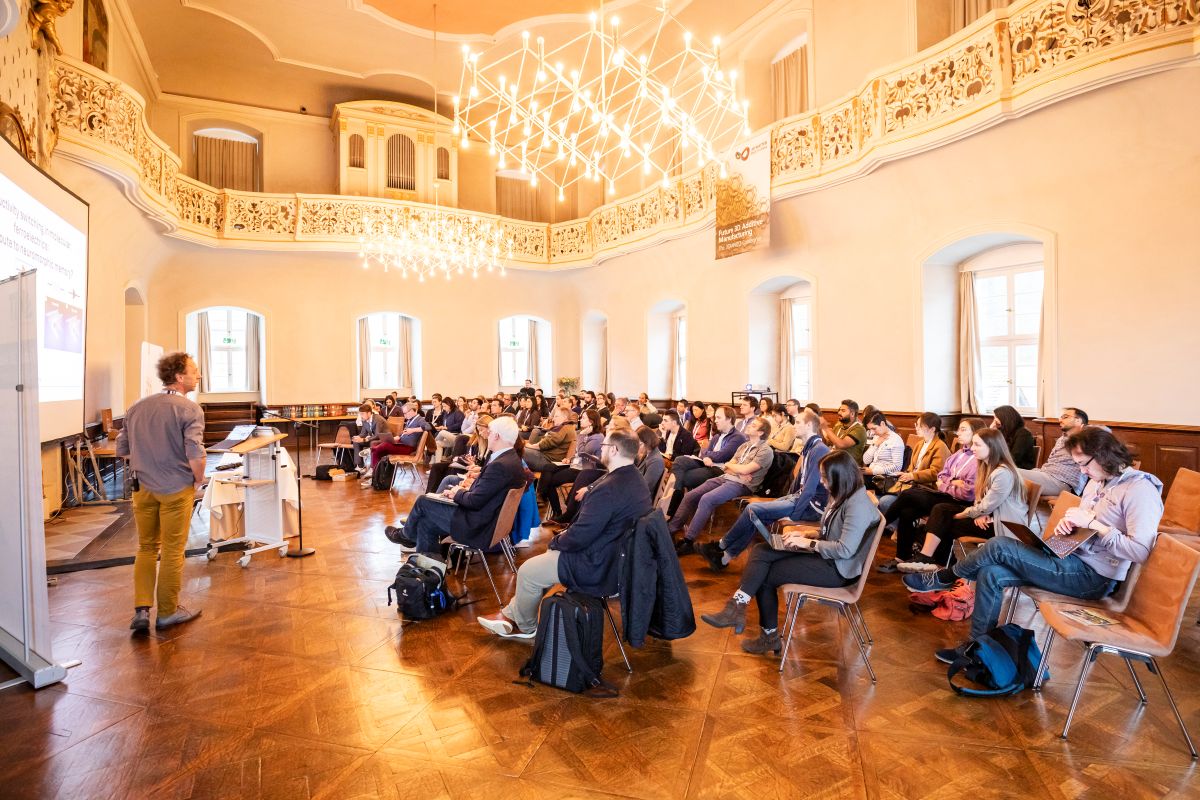
Recap of our Future3DAM Conference 2025
03.04.2025
The 3DMM2O Conference 2025 at Schöntal Monastery brought together leading experts to explore the latest advances in Additive Nano- and Micro-Fabrication in Optics, Electronics and Bioengineering. Over three days, participants engaged in insightful talks, poster sessions, and flash talks, fostering discussions and knowledge exchange. Beyond the scientific program, participants enjoyed valuable networking opportunities and a memorable social program, including the conference dinner. Thank you to all participants for contributing to the success of this event. Take a look at some highlights of the conference here!
Our Cluster Principal Investigator, Prof. Dr. Wolfram Pernice from the Heidelberg University, was officially awarded the prestigious Gottfried Wilhelm Leibniz Prize of the German Research Foundation (DFG). The award ceremony took place in Berlin on March 19 in the presence of German Federal Research Minister Cem Özdemir. In a festive setting, ten outstanding researchers were honored for their groundbreaking contributions. The DFG praised Prof. Pernice’s pioneering work in integrated photonics and neuromorphic photonic computing, which is shaping the future of energy-efficient AI and quantum technologies.
© DFG / David Ausserhofer
A recent Nature study co-authored by Cluster Principal Investigator Peter Gumbsch explores how chiral metamaterials can revolutionize mechanical energy storage. By using twist buckling instead of traditional bending, these materials achieve higher stiffness, greater recoverable strain, and up to 160 times greater energy storage capacity. Their innovative design allows for controlled torsional deformation, improving performance without increasing material failure. This breakthrough opens up new possibilities for lightweight, resilient structures in energy storage, impact protection, and robotics.

13.03.2025
We are excited to announce that Cluster of Excellence 3DMM2O is now on Bluesky. Follow us at @cluster3dmm2o.bsky.social to stay updated on our work in scalable digital 3D Additive Manufacturing, advancing research from molecular to macroscopic levels. We will share insights into cutting-edge technologies in 3D printing, functional materials, hybrid systems, and biomanufacturing, as well as highlight achievements and events hosted by our members. Join us as we explore the future of manufacturing and innovation. Follow us now and join the community!
In celebration of International Women’s Day, we are pleased to present a new episode of our Women in Science series featuring Cluster Principal Investigator Stefanie Dehnen. As a leading expert in molecular nanotechnology and cluster chemistry, she explores the design of atomically precise molecular clusters with potential applications in sustainable materials and energy storage. In this interview, she reflects on her journey in STEM, the challenges women face in science, and the importance of mentorship. Watch the full video to learn more about her inspiring career and her message to future scientists!

Exploring 3D Maxwell Beams with Floppy Modes
06.03.2025
Scientists, including Cluster Postdoctoral Researcher Yi Chen, Doctoral Researchers Paul Krause and Jonathan Schneider, and PI Martin Wegener, have developed a 3D Maxwell beam that uniquely balances flexibility and stability. This structure exhibits “floppy” vibration modes that are highly localized at one end and remarkably robust even when parts are removed, thanks to a special topological polarization. Using 3D laser printing, the team created prototypes and confirmed their findings at kHz frequencies, opening up new possibilities for robotics, mechanical engineering and civil engineering. Their research advances topological mechanics and lays the foundation for smarter, more adaptable mechanical systems.
Recent research including Cluster Postdoctoral Researchers Yi Chen and Ke Wang and Principal Investigator Martin Wegener has shown that electrical conduction in specially designed metawires fundamentally differs from Ohm’s law. Unlike conventional conductors, where resistance increases linearly with length, meta-wire resistance shows oscillatory behavior due to nonlocal conduction effects. This phenomenon results from countercurrents flowing against the applied electric field, leading to wave-like resistance patterns that can be controlled by structural design. These findings open up new possibilities for remote electrical sensing, heat conduction, and particle diffusion.
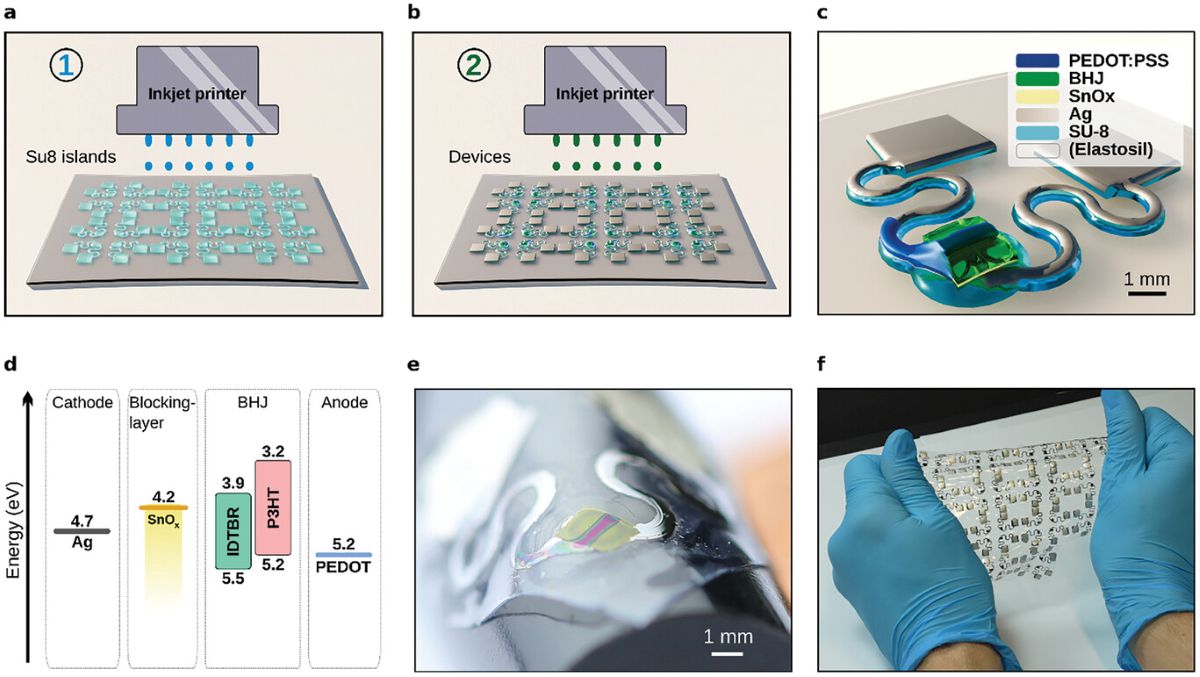
Inkjet-printed stretchable light scanners
25.02.2025
A team of researchers including Doctoral Researchers Christian Rainer, Kai Xia and Principal Investigators Uli Lemmer and Gerardo Hernandez Sosa, has developed flexible light sensors that remain fully functional after 600 stretching cycles at 7% strain. Their approach uses protective structures to shield the electronic components, allowing the sensors to bend and stretch without losing performance. This breakthrough could advance wearable health monitors, smart textiles and other flexible electronic devices, making them more durable and reliable. With potential applications in health monitoring, robotics, and environmental sensing, this innovation paves the way for the next generation of smart technologies.
A recent review by Cluster Postdoctoral Researchers Magdalena Fladung, Yi Chen, Doctoral Researchers Alexander Berkes, Natalie Munding, and PIs Motomu Tanaka, Martin Wegener, and Martin Bastmeyer explores the potential of elastic microscaffolds with metamaterial properties in mechanobiology. The study shows how auxetic materials with negative Poisson’s ratio and soft PDMS-based 3D microprinted structures can create finely tuned mechanical environments for cells, opening up new possibilities for tissue engineering and single-cell force measurement. A key challenge remains the transition from two-dimensional to three-dimensional systems to better model in vivo conditions.
We are proud to congratulate our Cluster Principal Investigator Stefanie Dehnen, one of the recipients of the Hector Science Award. As a leading expert in inorganic chemistry and materials science at the Karlsruhe Institute of Technology (KIT), Prof. Dehnen’s pioneering research on cluster-based materials is revolutionizing energy storage, sustainable synthesis, and the understanding of chemical bonding. Her innovative approaches to quantum chemistry and sustainable materials are shaping the future of functional technologies. With this award, she joins the Hector Fellows Academy, which is renowned for promoting interdisciplinary research.
A team of scientists including Cluster Doctoral Researchers Philipp Mainik and Magdalena Fladung, Cluster Scientists Camilo Aponte-Santamaría and Irene Wacker, and Principal Investigators Martin Bastmeyer, Rasmus R. Schröder, Frauke Gräter and Eva Blasco, has developed a collagen type I methacrylamide (ColMA) ink that enables precise 3D printing of microstructures using two-photon laser printers. The ink, storable at room temperature, enables structures that reversibly fold and unfold with temperature changes, mimicking natural extracellular matrix behavior. This breakthrough opens new possibilities for dynamic biomaterials, advanced tissue scaffolds, and 4D printing.
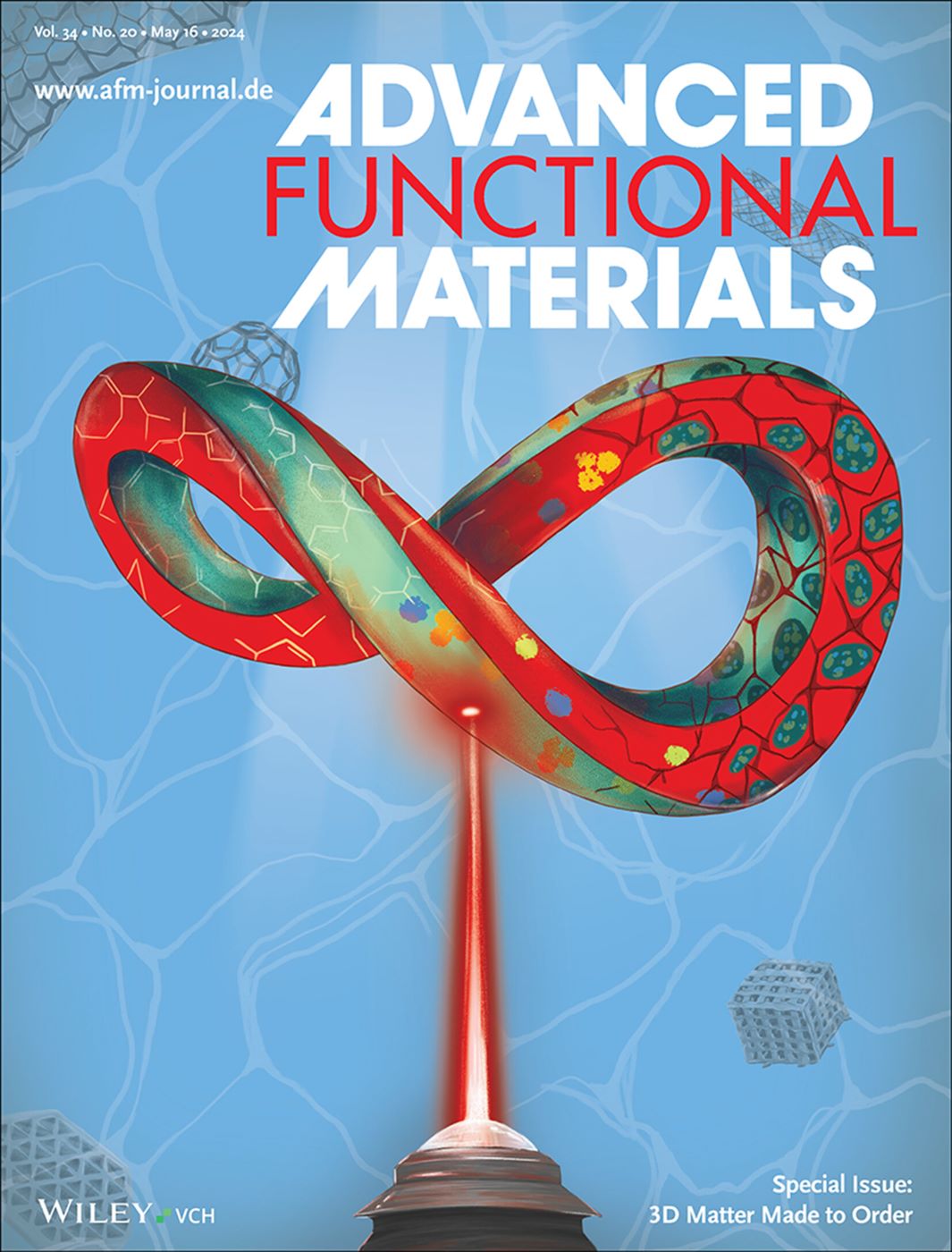
Advanced Functional Materials: Special Issue
10.01.2025
Explore the latest Special Issue of Advanced Functional Materials (Volume 34, Issue 20), featuring groundbreaking research from our Cluster of Excellence 3D Matter Made to Order (3DMM2O). This issue focuses on advances in digital 3D additive manufacturing, covering innovations from the molecular and nanometer scale to larger micro- and macroscale applications. The articles explore how these technologies are pushing the boundaries of engineering and the life sciences, offering new solutions to previously unsolvable challenges. Learn more about the future of 3D printing and the pioneering work of 3DMM2O.
Don’t miss your chance to attend the Future 3D Additive Manufacturing – 3DMM2O Conference 2025, taking place from March 23–27, 2025, at the historic Schöntal Monastery. The registration deadline is January 31, 2025 – secure your place now! This year’s focus is on Additive Nano- and Micro-Fabrication, with topics such as photonic neural networks, bioelectronic devices, and recyclable electronics. Engage with leading experts, discover the latest advances and explore the future of 3D additive manufacturing at this unique event.
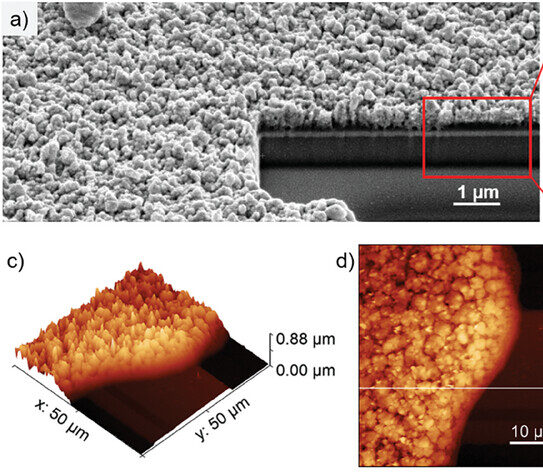
A breakthrough in printed electronics
10.01.2025
Cluster Doctoral Researchers Yan Liu and Christian Rainer, Principal Investigators Uli Lemmer, Christof Wöll, and Jasmin Aghassi-Hagmann, and Cluster Alumnus Hongrong Hu, have successfully integrated HKUST-1, a metal-organic framework (MOF), into inkjet-printed memristors. These advanced memory devices operate at ultra-low voltages (~1V), achieve resistance changes up to 10,000 times, and remain stable over more than 60 write-erase cycles. This innovation combines the precision of inkjet printing with the unique properties of MOFs, paving the way for scalable, sustainable, and next-generation electronics.
Our Principal Investigator, Prof. Dr. Kerstin Göpfrich of the Heidelberg University, has been funded by the prestigious Allen Distinguished Investigator Program of the Paul G. Allen Family Foundation. Her project, in collaboration with researchers in Austria and the United Kingdom, will investigate how chemical exchange processes influence cell shape and the role of active membranes in cellular communication. The Foundation is providing $1.5 million for this groundbreaking research, which combines simulations, synthetic membrane systems, and in vivo experiments to unravel this newly hypothesized mechanism.
Our Cluster Principal Investigator, Prof. Dr. Wolfram Pernice from the Heidelberg University, was officially awarded the prestigious Gottfried Wilhelm Leibniz Prize of the German Research Foundation (DFG). The award ceremony took place in Berlin on March 19 in the presence of German Federal Research Minister Cem Özdemir. In a festive setting, ten outstanding researchers were honored for their groundbreaking contributions. The DFG praised Prof. Pernice’s pioneering work in integrated photonics and neuromorphic photonic computing, which is shaping the future of energy-efficient AI and quantum technologies.
© DFG / David Ausserhofer
Explore the future of sustainable 3D printing in our latest Explain Like I’m Five video with Clara Vázquez-Martel, a Doctoral Researcher at the Heidelberg University. Clara explains her research on using microalgae and sunflower oil as eco-friendly alternatives to petroleum-based materials to create biocompatible, high-resolution 3D printing materials. By chemically modifying these natural resources, her work highlights a greener approach to advanced manufacturing. Don’t miss this inspiring insight into how science is making sustainability a reality. Watch it now in German!
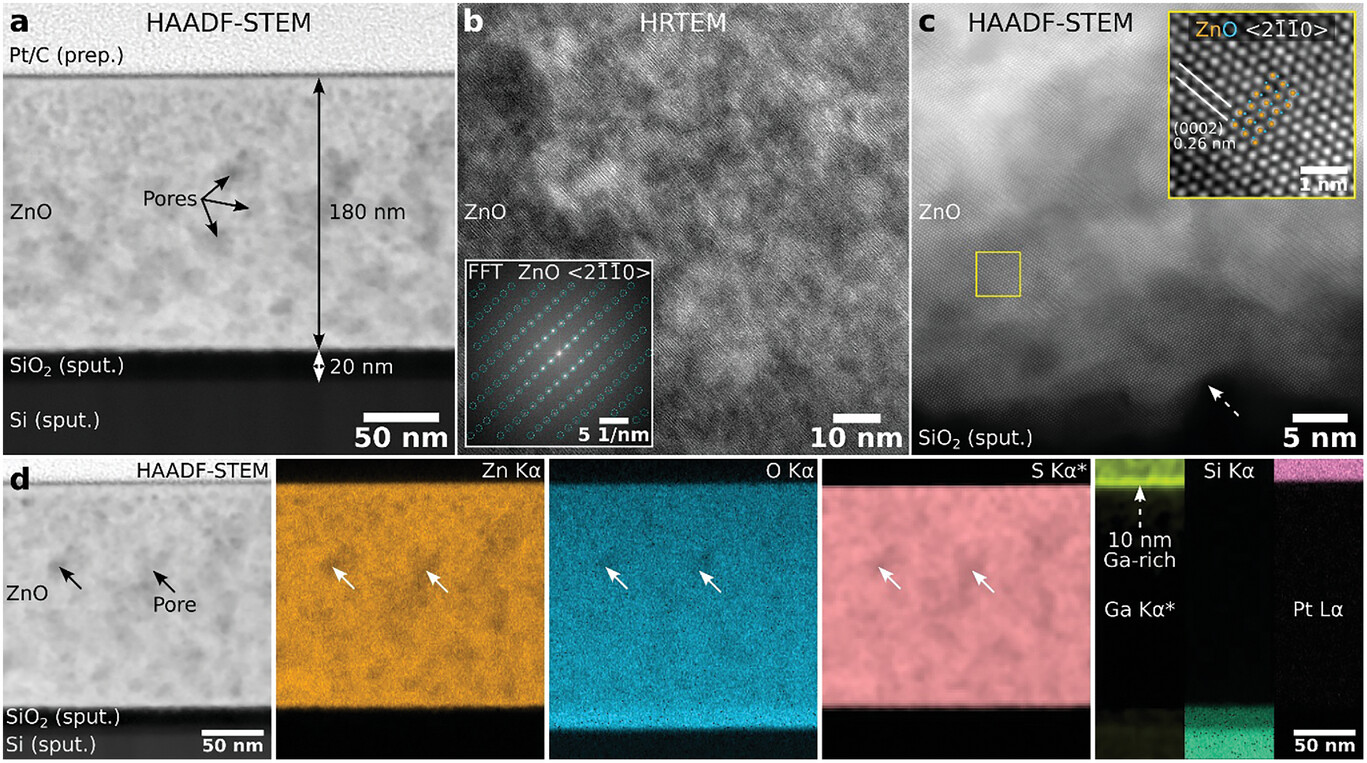
A New Milestone in 3D Printing
06.12.2024
Researchers have developed a groundbreaking 3D laser printing method for single-crystalline zinc oxide (ZnO) structures with sub-micrometer precision, eliminating the need for cleanrooms or complex post-processing. The team, including Cluster Doctoral Researchers Matthias Steurer, Kristian Kraft, Steven Kraus, Postdoctoral Researchers Paul Somers, Lukas Grünewald, Florian Feist, and PIs Prof. Dr. Stefanie Dehnen, Yolita M. Eggeler, Christopher Barner-Kowollik, and Martin Wegener, optimized the process with DMSO and tailored substrates to improve heat management and light absorption. This innovation enables precise printing, opening new possibilities for microelectronics and optics, such as nanowire transistors and microlasers.
We are proud to announce that our Cluster Alumnus, Pascal Kiefer, has been awarded the prestigious Otto Haxel Award for Physics for his groundbreaking dissertation on “Next-Generation Multi-Focus 3D Laser Printing”. His innovative work addresses key limitations in printing speed and introduces advances in photoresist sensitivity and beam splitting techniques that are revolutionizing 3D laser printing for transformative applications in fields such as healthcare and materials science. Congratulations to Pascal on this remarkable achievement!
Our Custer Principal Investigator, Christopher Barner-Kowollik, has been awarded the prestigious Alexander von Humboldt Professorship. He will join the Karlsruhe Institute of Technology (KIT) to research new materials and polymer-based systems, with a focus on next-generation materials. Barner-Kowollik’s work in photochemistry challenges long-held ideas and opens up new possibilities in fields such as phototherapy and materials development. He will also serve as director of the Institute of Functional Interfaces (IFG) at KIT, leading a new research direction in innovative materials.
The Heidelberg University received 10.9 million euros from the DFG for the Collaborative Research Centre 1249, which is led bour Cluster Principal Investigator Petra Tegeder. The research focuses on the development of novel organic materials with tunable electronic and optical properties for use in semiconductors and photoactive devices. The project includes collaborations with the Karlsruhe Institute of Technology and the Max Planck Institute for Solid State Research and will run for up to twelve years.
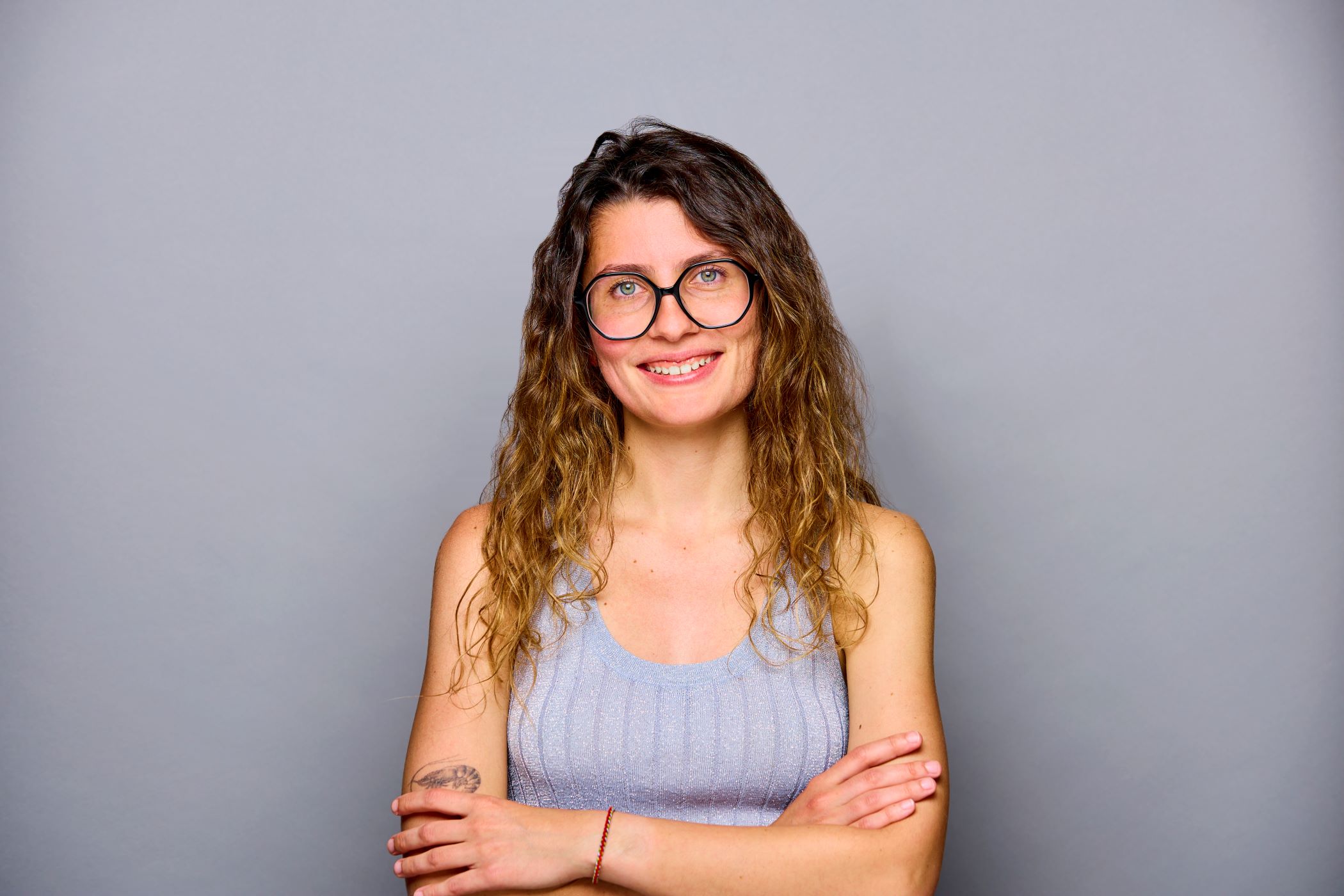
New Class of Young Marsilius Fellows
25.11.2024
We are thrilled to announce that Clara Vazquez-Martel, Doctoral Researcher from our Cluster, has been selected as a Young Marsilius Fellow at Heidelberg University’s Marsilius Kolleg! This prestigious program promotes interdisciplinary dialog between the humanities, social sciences and natural sciences, and supports innovative approaches to science communication. Clara will work with a team of young researchers on the topic of “RIGHT & WRONG”, leading up to a symposium in July 2025. Congratulations!
With six million euros in funding from the Carl-Zeiss-Stiftung, researchers at the Heidelberg University are developing innovative approaches for the engineering of complex organoid models. The interdisciplinary project, which includes Principal Investigators Christine Selhuber-Unkel, Wolfram Pernice, Joachim Wittbordt, Michael Boutros and Peer Fischer, aims to create advanced organ-on-a-chip systems for studying multi-organ interactions, enabling precise disease modeling and novel therapeutic testing while reducing animal testing.
Cluster scientists, including Postdoctoral Researcher Yi Chen, Doctoral Researchers Jonathan L. G. Schneider, Ke Wang and Sebastian Kalt, and Principal Investigator Martin Wegener, have studied the fascinating properties of frozen evanescent waves in elastic metamaterials. Their findings show how these waves enable unique material responses and challenge Saint Venant’s principle, suggesting forces can have long-range effects. This research, published in Nature Communications, opens new possibilities for mechanical sensing and material design.
Cluster researchers, including Doctoral Researchers Jannis Weinacker and Sebastian Kalt, Principal Investigator Martin Wegener, and Alumnus Maximilian Bojanowski, have developed the first two-photon 3D-printable plastic scintillator. This innovation enables micrometer precision and optical-grade surfaces, as demonstrated in the KATRIN experiment. While the light yield is below that of commercial scintillators, it provides the basis for advanced high-resolution detectors in particle physics and medical imaging.
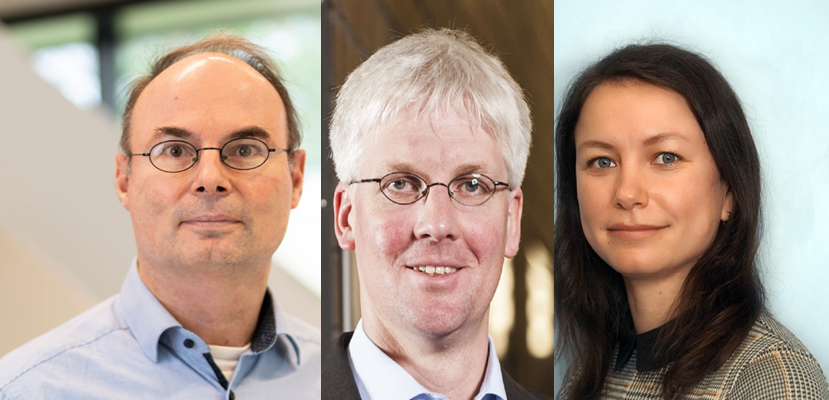
ERC Synergy Grants for Cluster Researchers
06.11.2024
We are delighted to announce that three outstanding researchers from our Cluster have been awarded the prestigious ERC Synergy Grants! Principal Investigators Christian Koos and Stefan Bräse from the Karlsruhe Institute of Technology (KIT) received one Synergy Grant for their collaborative research project. Separately, Cluster Scientist Venera Weinhardt from Heidelberg University received another Synergy Grant. The ERC Synergy Grants support complex, collaborative projects that bring together several researchers to address major scientific challenges.
We are pleased to announce that registration is now open for The Future of 3D Additive Manufacturing – The 3DMM2O Conference 2025! Join us on 23-27 March 2025 at the beautiful Schöntal Monastery to learn about the latest advances in additive nano- and micro-manufacturing in optics, electronics and bioengineering. This time Jasmin Aghassi-Hagmann and Christian Koos from the Karlsruhe Institute of Technology (KIT) and Wolfram Pernice from the University of Heidelberg will bring together renowned scientists on this topic. Take advantage of our early bird tickets, available until 30 November 2024!
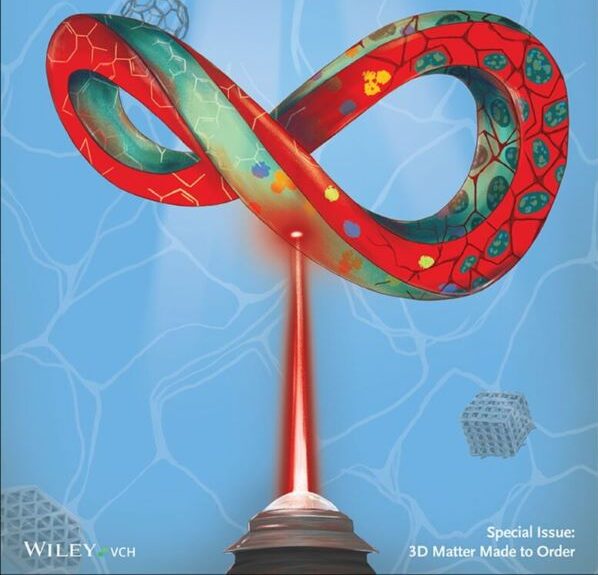
Advanced Functional Materials: Special Issue
01.10.2024
Explore the latest Special Issue of Advanced Functional Materials (Volume 34, Issue 20), featuring groundbreaking research from our Cluster of Excellence 3D Matter Made to Order (3DMM2O). This issue focuses on advances in digital 3D additive manufacturing, covering innovations from the molecular and nanometer scale to larger micro- and macroscale applications. The articles explore how these technologies are pushing the boundaries of engineering and the life sciences, offering new solutions to previously unsolvable challenges. Learn more about the future of 3D printing and the pioneering work of 3DMM2O.

20.09.2024
Join the 4th Materials Day of the KIT Materials Center (MaTeLiS) on October 16, 2024 at the KIT Campus North. This event will bring together top scientists from Karlsruhe Institute of Technology (KIT) and beyond to focus on the latest innovations in self-assembling, adaptive, and biomimetic materials systems. The day will feature keynote presentations by experts such as Mr. Peter Hassenbach from the German Federal Ministry of Education and Research, Prof. Jörg Neugebauer from the Max Planck Institute, and Dr. Frank Runge from BASF. Attendees will also have the opportunity to network and explore cutting-edge research through poster presentations. Registration is open until October 12, 2024.
A groundbreaking paper in organoid research, published in Nature Nanotechnology by Cluster Doctoral Researchers Cassian Afting, Tobias Walther, and Christina Schlagheck, along with Principal Investigators Ulrich Schwarz, Joachim Wittbrodt, and Kerstin Göpfrich, involves nanoengineered DNA microbeads that enable precise control of signaling in organoids. These microbeads enhance organoid development by providing essential biochemical cues. This technology is particularly useful for modeling complex tissues such as the retinal pigmented epithelium and holds promise for advancements in organ models, personalized medicine and disease modeling.
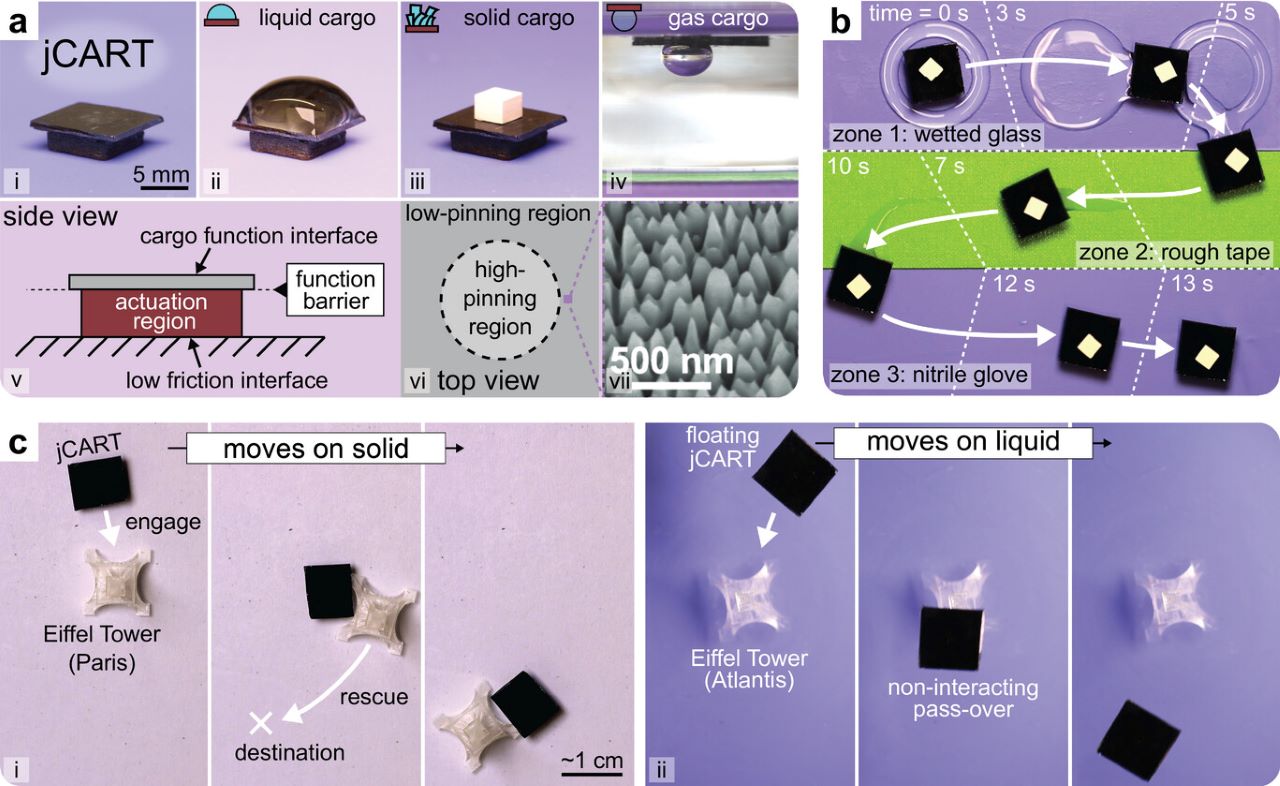
06.09.2024
A recent Cluster publication introduced CART (Carrier-Based Actuatable and Reprogrammable Transport), an innovative system for remote manipulation of microcargos on both solid and liquid surfaces. Developed by Postdoctoral Researcher Nikolaj K. Mandsberg, Doctoral Researcher Julián A. Serna, and Principal Investigator Pavel Levkin, this technology revolutionizes miniaturized experiments in fields such as biology, chemistry, and diagnostics. By using a magnetic carrier to decouple the cargo from the substrate, CART overcomes traditional limitations and enables versatile, automated experimentation. Its flexibility provides a universal solution for interacting with different types of cargo.
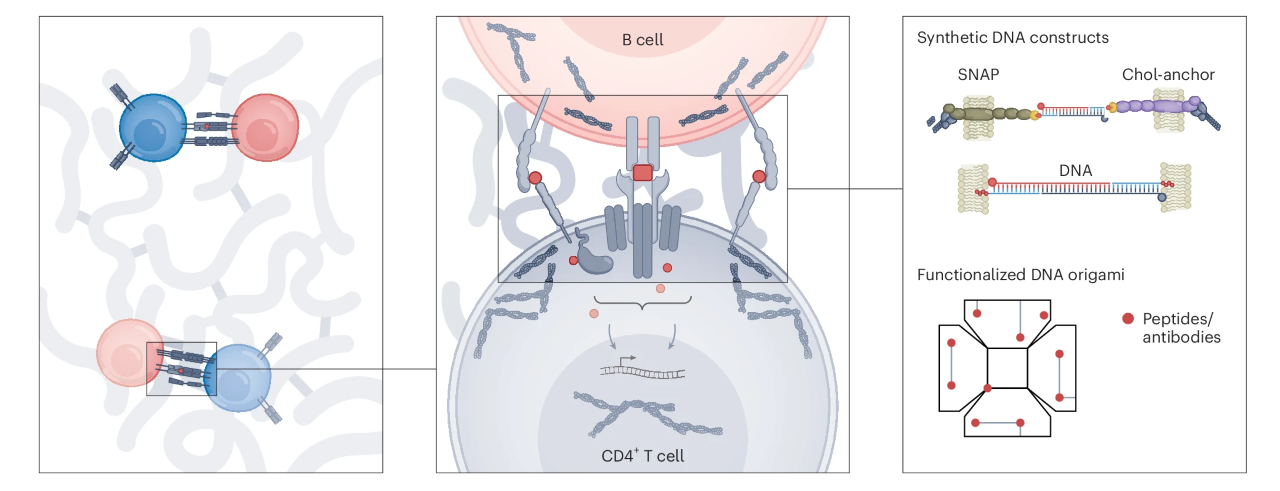
29.08.2024
A recent article in the Perspectives section of Nature Nanotechnology, co-authored by Cluster Principal Investigator Kerstin Göpfrich, describes the latest advances in synthetic immunology. This groundbreaking research examines how the integration of nanotechnology with synthetic biology is reshaping the treatment of cancer and infectious diseases. The article highlights significant advances in the development of genetically engineered immune cells, such as CAR-T cells, and innovative bottom-up approaches that use nanoscale structures to target diseases with high precision. These advances promise to improve treatment efficacy and open up new therapeutic opportunities.
A recent paper published in Nature Communications, co-authored by PI Motomu Tanaka, presents an innovative water purification method inspired by plant proteins. The phytochelatin-inspired copolymers developed by the team effectively bind toxic heavy metals such as cadmium (Cd²⁺), providing a highly efficient and sustainable solution for water treatment. By attaching these copolymers to silica microparticles and cellulose membranes, the researchers have created a system that significantly reduces cadmium levels in water, paving the way for safer and cleaner drinking water.
A new study with Postdoctoral Researcher Steven Gauci and Principal Investigator Christopher Barner-Kowollik, published in Nature Communications, has identified a goldilocks zone of optimal photoreactivity. By precisely spacing photoreactive units in macromolecules, the research demonstrates how reaction efficiency and 3D printing quality can be significantly improved. These findings have the potential to revolutionize light-based manufacturing and advance the development of new photoresists.
A team of researchers, including Cluster Doctoral Researchers Clara Vazquez-Martel, and Elisa Genthner and PIs Martin Bastmeyer and Eva Blasco, extracted and functionalized microalgae lipids for use as inks in two-photon 3D laser printing. Microalgae offer significant advantages as 3D printing materials due to their reduced carbon footprint and superior bio- and cytocompatibility. Their CO2 fixation during cultivation and rapid growth make them ideal for creating sustainable, eco-friendly materials with promising applications in biocompatible implants and non-toxic 3D cell scaffolds.
Cluster Principal Investigator Prof. Dr. Eva Blasco has been selected as one of the winners of the 2024 Advanced Science Young Innovator Award.
The award recognizes outstanding interdisciplinary scientific contributions in materials science, physics, chemistry, medical and life sciences, and engineering through the development of research leaders. Eva Blasco’s work on creating smart functional materials with “life-like” properties using high-resolution 3D/4D printing has earned her this prestigious recognition. Congratulations!
Our Cluster Principal Investigator, Prof. Dr. Joachim Wittbrodt from the University of Heidelberg, has been elected a member of the European Molecular Biology Organization (EMBO) for his outstanding contribution to life science research. The international scientific organization honors researchers worldwide. Prof. Wittbrodt studies the development of fish embryos from the first cells to the differentiating organism. He combines state-of-the-art genetic, molecular and cell biology approaches, and his work has contributed significantly to the development of the CRISPR/Cas gene scissors. Congratulations!
Cluster Principal Investigator Prof. Dr. Kerstin Göpfrich receives the Alfried Krupp Prize 2024, one of the most prestigious scientific awards in Germany. The prize, which is endowed with 1 million euros, gives the winners freedom in research and teaching for a period of five years. Kerstin Göprich is a professor at the Center for Molecular Biology at the University of Heidelberg. She also heads a research group in the field of biophysical engineering at the Max Planck Institute for Medical Research in Heidelberg. Her research focuses on the construction of artificial cells from customized components. With her groundbreaking work, she aims to create an artificial model cell that will open up new ways of describing and harnessing the processes of life. Congratulations!
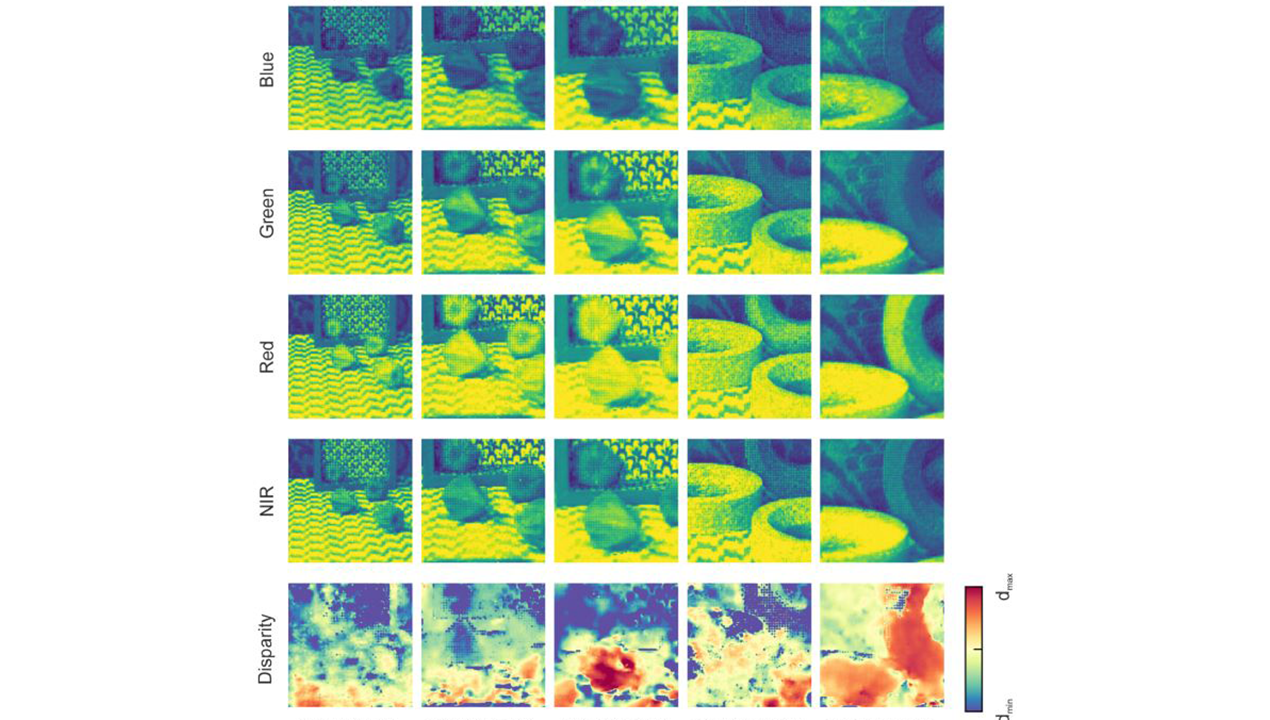
01.07.2024
Cluster Principal Investigator Prof. Dr. Uli Lemmer was part of a research team at the Karlsruhe Institute of Technology that developed a portable multispectral 3D camera using inkjet printing. This palm-sized camera captures both 3D spatial and spectral information in a single snapshot, which traditionally requires multiple devices or time-consuming scanning processes. By integrating AI, the palm-sized camera can accurately distinguish objects and materials based on their spectral characteristics. This innovation opens the door to a wide range of applications, from autonomous driving and consumer electronics such as smartphones to medical devices such as endoscopes.
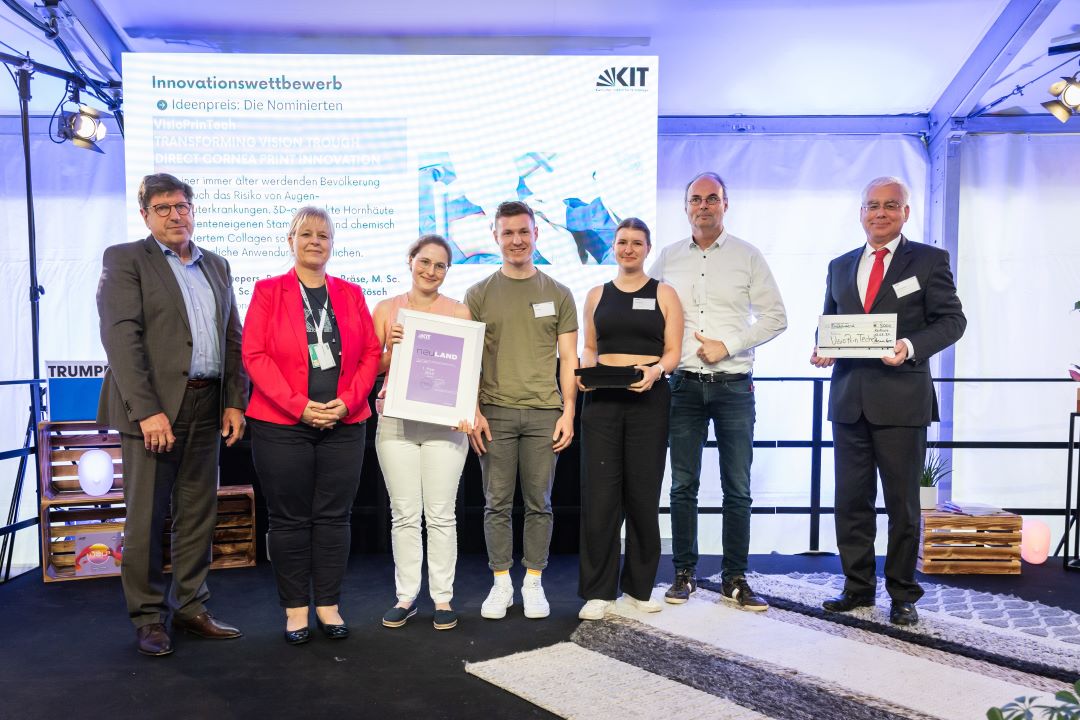
21.06.2024
Printing a new cornea during surgery to restore vision: This groundbreaking step in the fight against corneal diseases will be made possible in the future by a laser-based procedure using customized bio-ink. It was developed by researchers at the Karlsruhe Institute of Technology (KIT) led by Cluster Principal Investigator Ute Schepers with the participation of Principal Investigator Stefan Bräse together with the companies Carl Zeiss Meditec AG and Evonik Healthcare. The project was awarded a prize in this year’s NEULAND innovation competition.
A new cluster publication with first author Niklas Schwegler has been published in Small. Postdoctoral Researchers Maria Villiou, Federico Colombo, Barbara Schamberger and Principal Investigators Christine Selhuber-Unkel, Franziska Thomas and Eva Blasco are also involved. The scientists developed a direct method to fabricate 3D microstructured cell-adhesive and cell-repellent multimaterials using two-photon laser printing. This method offers better molecular control, high customizability, and fast and precise 3D fabrication, suitable for a variety of applications, such as cellular studies in complex environments.
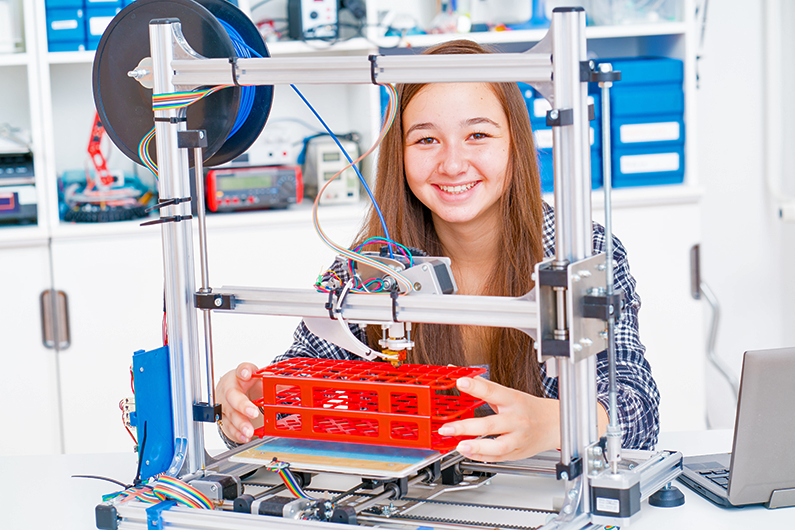
23.05.2024
Register now for our summer program July 29 – August 2, 2024 and spend a week learning about 3D printing! Our Cluster is organizing a summer program for young women aged 13-19 once again. Participants will learn about the entire 3D printing process: From the creation of a CAD model to the printed part. By the end of the week, they will be able to produce their own small projects such as cell phone cases, key chains, name badges, holders and more. The summer program is held in German at the ZEISS Group Innovation Hubs on the KIT Campus North in Karlsruhe.
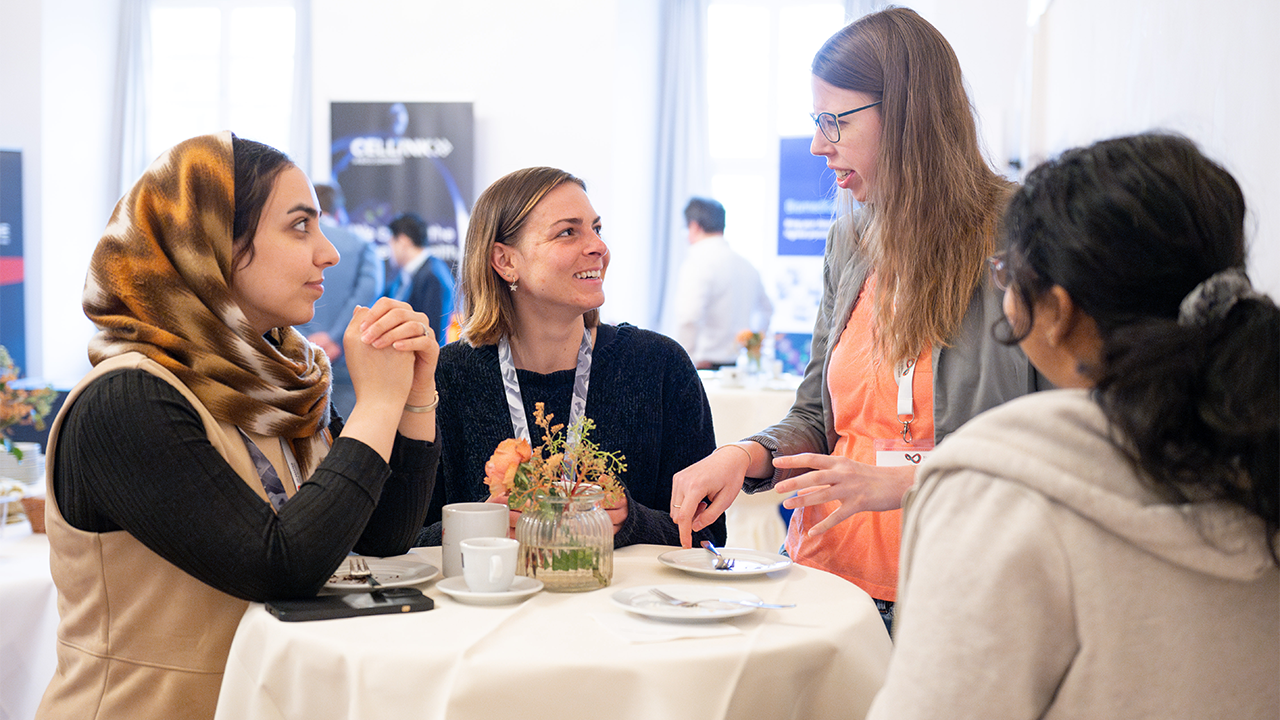
19.04.2024
Our annual 3DMM2O Conference took place at Schöntal Monastery in April. A very exciting program was put together: In addition to the PIs and Doctoral Researchers, an excellent selection of invited speakers gave presentations. During the five-day conference, there were also plenty of networking opportunities and exchange during the poster sessions or the social program. Get some impressions of this year’s conference!

A first in artificial cell division!
17.04.2024
Cluster Alumnus Kevin Jahnke is second author and Cluster PI Prof. Dr. Kerstin Göpfrich is co-author of a pioneering paper published in Nature Communications. The research team succeeded for the first time in developing a ring of DNA nanotubes that could be used for artificial cell division. The results have provided new insights into the formation of DNA nanotube rings and the architecture of their contraction mechanism. Findings based on DNA-based contractile rings could be used to create artificial machines for dividing or contracting muscle-like materials.
A new Cluster publication by first author Dr. Pascal Kiefer addresses one of the key challenges of multi-photon 3D laser printing. The scientists have developed a new setup that allows printing speeds to increase 10-fold. The combination of the large array and fast scan speeds means that very large or small samples can be produced in large quantities at a high 3D printing rate. This opens up the possibility of new studies, for example in the field of respiratory drug delivery, where some sample requirements were previously unachievable.
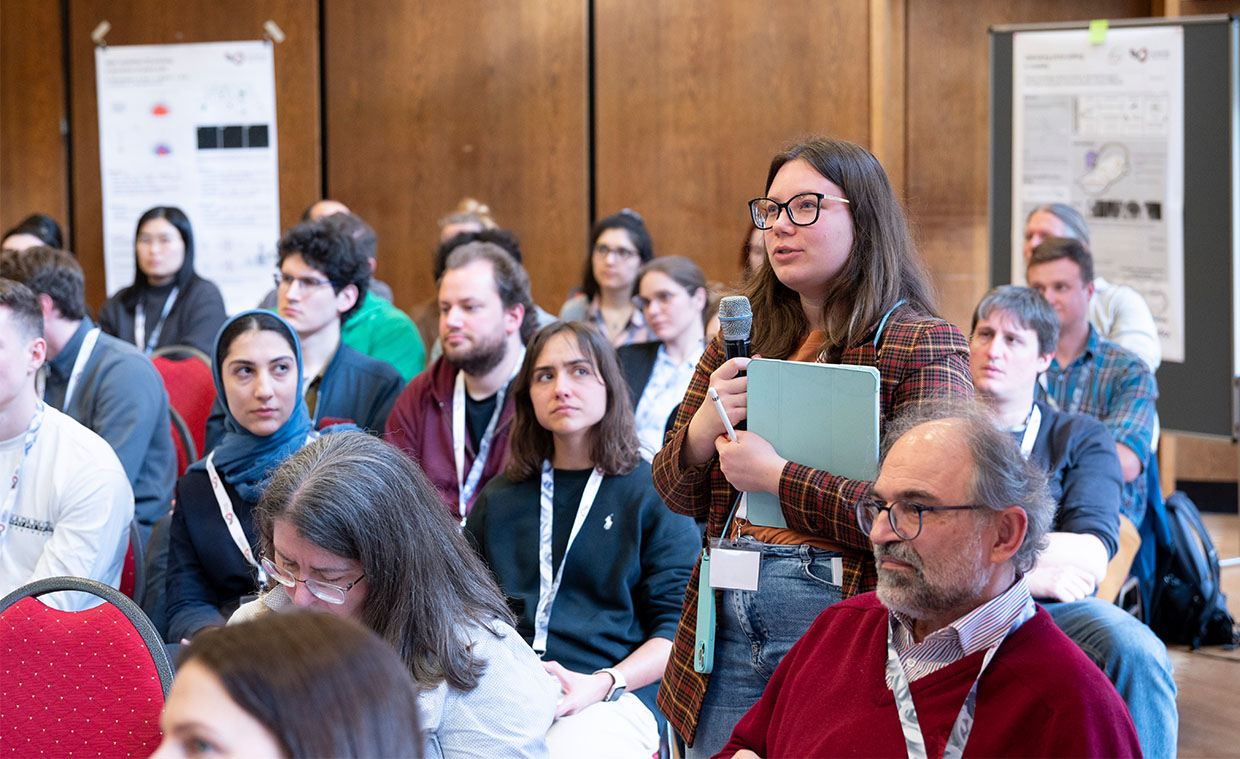
Recap Winter Cluster Meeting 2024
19.03.2024
In March, the Cluster members met for the yearly Winter Cluster Meeting at Kloster Neustadt. During the two-day event, there were presentations by Principal Investigators, insights into Postdoc Take-Off Grant projects, poster sessions and a lot of room for networking and scientific discussion. It was a great pleasure to see and talk to you!
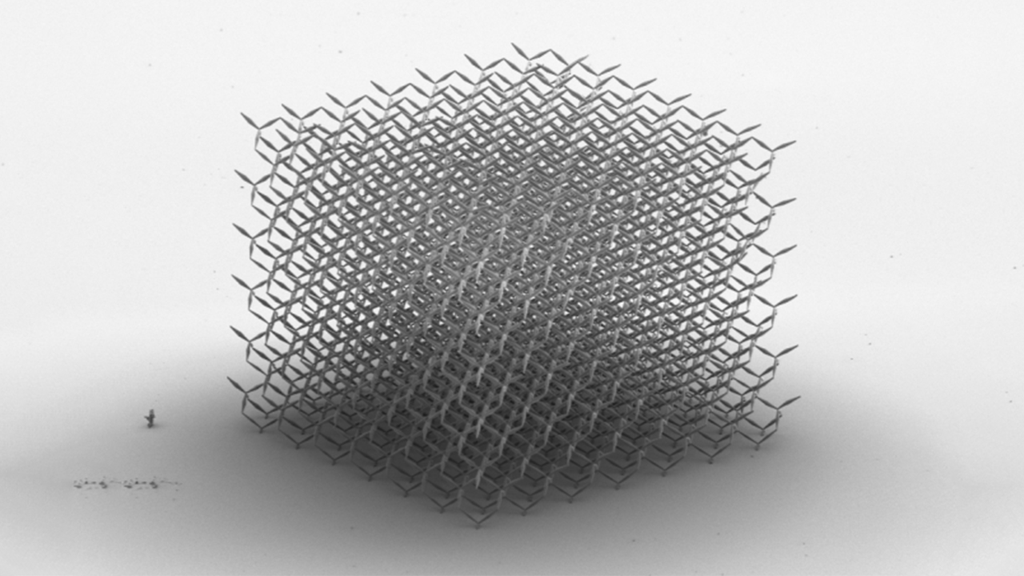
Prof. Dr. Graeme Milton gives a Lecture on Metamaterials at the APH
12.02.2024

Continuation Application goes to the Final Round
01.02.2024
The renewal application for the Cluster of Excellence 3D Matter Made to Order, which has been funded since the end of 2019, is entering the final round. The application must be submitted by August 22, 2024. In May 2025, the Excellence Commission, made up of the members of the expert panel and the federal and state science ministers, will make the final decision on which Clusters of Excellence will be funded in the future. Funding will begin on January 1, 2026 and will run for seven years. The aim of the Excellence Strategy is to strengthen Germany as a science location in the long term and to further improve its international competitiveness.
A recent Cluster publication by first author Young Scientist Federico Colombo introduces a novel 2-photon laser printing method for mechanically stimulating multicellular systems in 3D. This technique enables precise control over the mechanical environment of cells, allowing for a deeper understanding of their behavior and potential therapeutic applications. The findings pave the way for the development of novel tools and strategies for manipulating cellular behavior in a controlled manner, opening up new possibilities for regenerative medicine, tissue engineering, and drug discovery. Cluster PIs Joachim Wittbrodt and Christine Selhuber-Unkel were also involved in this paper.
A new Cluster publication in Advanced Functional Materials highlights the transformative potential of printed electronics for interfacing with biological systems, from single cells to organoids. The review article by first author Young Scientist Mahsa K. Saghafi summarizes the recent advancements in this rapidly growing field and showcases its diverse applications in biosensing, neural interfacing, and organ-on-a-chip technologies. The article resulted from the collaboration of researchers from KIT and Heidelberg University, including PIs Motomu Tanaka, Martin Bastmeyer, Christine Selhuber-Unkel, Ute Schepers, and Jasmin Aghassi-Hagmann.
A new review article by first author Cluster Young Scientist Paul Somers discusses the physics of 3D printing with light. The article published in the journal “nature reviews physics” focuses on the physics underlying optics-based approaches, including interference lithography, tomographic volumetric additive manufacturing, stereolithography, continuous liquid-interface printing, light-sheet printing, parallelized spatiotemporal focusing and (multi-)focus scanning. It depicts the challenges to make 3D printing ‘finer’, ‘faster’, ‘more’ (i.e. to largely expand the possibilities of multi-material printing), and ‘less expensive’. Cluster alumnus Alexander Münchinger and PI Martin Wegener were also involved in this publication.
Multi-photon 3D laser printing, also known as direct laser writing (DLW), has revolutionized the fabrication of complex microstructures. A new review by co-first authors Cluster Young Scientists Philipp Mainik and Christoph Spiegel as well as PI Eva Blasco highlights recent advances in the field, with a focus on the use of active materials. The review published in Advanced Materials provides a comprehensive overview of the latest advances and challenges, and it offers insights into the future of the field, covering a wide range of topics, including applications in microrobotics, optics and photonics, microfluidics, and life sciences.
You can now register for the 3DMM2O Conference 2024 – Future 3D Additive Manufacturing on the topic 3D Cellular Systems: Synthetic Environments, Mechanobiology & Organoids. It will take place from April 7 to April 11 in the baroque Schöntal Monastery, Germany (near Heilbronn) and aims at bridging the gap between advanced biomaterials design and its application in biological research. Conference chairs are Martin Bastmeyer (Karlsruhe Institute of Technology, KIT), Kerstin Göpfrich (Heidelberg University), and Ulrich Schwarz (Heidelberg University). Early bird tickets are available until November 30!
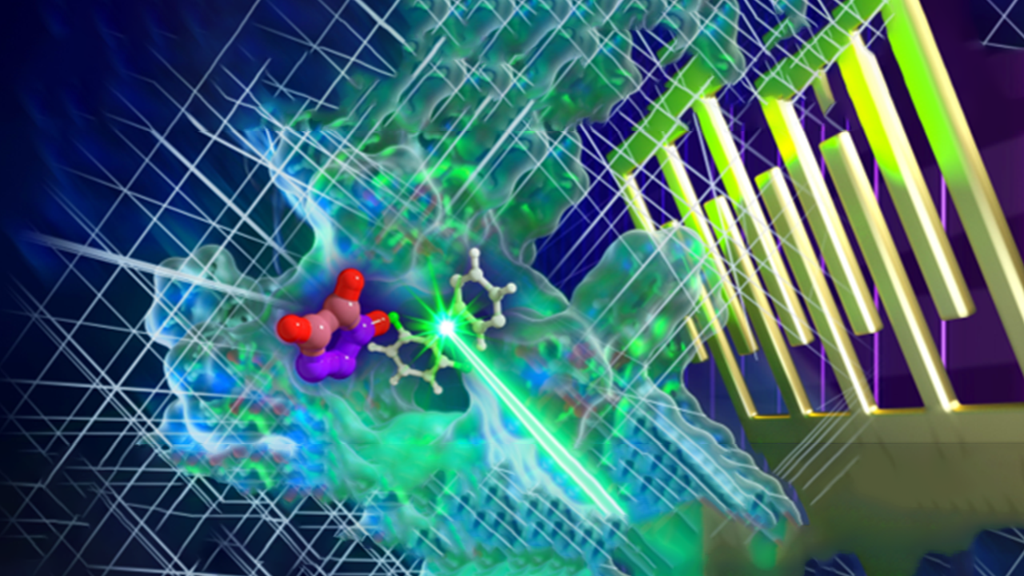
KIT Materials Day 2023
16.10.2023

Martin Wegener receives MOC Award
25.09.2023
Cluster PI and Spokesperson Martin Wegener received the prestigious MOC Award from the Japan Society of Applied Physics / Microoptics Research Group for his pioneering contributions to the research on 3D additive manufacturing of metamaterials. The award ceremony took place during the 28th Microoptics Conference on September 25, 2023, at the Seagaia Convention Center, Mayazaki, Japan. Prof. Wegener gave a plenary talk about the status and perspectives of 3D laser micro- and nanoprinting beforehand. Congratulations!

The Cluster welcomes two new Associate PIs
22.09.2023
We warmly welcome T.T.-Prof. Dr. Pascal Friederich and Prof. Gáspár Jékely as new Associate Principal Investigators in our Cluster! Pascal Friederich is head of the research group “Artificial Intelligence for Materials Sciences” at the Institute of Theoretical Informatics and associated group leader at the Institute of Nanotechnology, both at KIT. Gáspár Jékely is Professor of Molecular Organismal Biology at the Centre for Organismal Studies of Heidelberg University and head of the department “Evolutionary Neurobiology”. We wish both of them a good start in our Cluster and look forward to fruitful collaboration.
In a recent Cluster publication by first author Young Scientist Steven Gauci, the authors review the current status, challenges, and opportunities of photochemically activated 3D printing inks. The publication published in Advanced Materials is a collaboration of Heidelberg University, KIT, and the QUT Centre for Materials Science. Besides second author Young Scientist Aleksandra Vranić, who also strongly contributed to the paper, Cluster PIs Eva Blasco, Stefan Bräse, Martin Wegener, and Christopher Barner-Kowollik were involved.
Cluster PI Stefanie Dehnen was elected president of the German Chemical Society (GDCh) for the years 2024/2025. The election took place during the board meeting of the GDCh Science Forum Chemistry 2023 in Leipzig. The GDCh is the largest chemical society in continental Europe with over 30,000 members from academia, education, industry, and other areas. Its mission is to support chemistry in teaching, research, and application and to promote the understanding of chemistry in the public. Congratulations!

HEiKA Summer Science Academy 2023
04.09.2023
From August 27 to September 1, the HEiKA Summer Science Academy 2023 took place at the Black Forest hotel “Zuflucht”. Interested master students had the opportunity to learn from Cluster PIs, leading experts in the field of 3D Materials and Applications, about topics ranging from new 3D printing strategies to optoelectronic devices, microscopy and spectroscopy, and hybrid organoid systems. In addition to the lectures and workshops, the students also had the chance to explore the Black Forest, share ideas, and network with their peers. Thank you to everyone who made this event possible, especially the lecturers and organizers.

29.08.2023
From the Stone Age to the Metamaterial Age? A recent Cluster publication with PI Martin Wegener published in the IOP journal “Reports on Progress in Physics” summarizes the conceptual as well as experimental state-of-the-art of mechanical metamaterials, including different functional architectures, dimensions, and length scales, ranging from below one micrometer to tens of meters. The review addresses an approach that is based on creating artificial atoms with designed and tailored properties, allowing for desired behavior and functionalities of the artificial amorphous arrangements.
Cluster Principal Investigator Jasmin Aghassi has been appointed member of the editorial board of the IEEE Journal on Flexible Electronics (J-FLEX) on July 2023. The journal publishes cutting edge research covering all aspects of sensors, transistors, related devices, circuits, systems on flexible, disposable, stretchable and degradable substrates. Since 2022, she is also executive editorial board member of the IOP Journal Flexible and Printed Electronics (FPE). We congratulate her and wish her much success for this new responsibility.
First author Young Scientist Britta Weidinger presents new self-assembled printable materials based on a novel ink, enabling precise control of the nanostructure in 3D in a new Cluster publication. The ink developed by the researchers of Heidelberg University and KIT is suitable for high-resolution two-photon 3D printing and based on self-assembled block copolymers containing photo-cross-linkable groups. The authors including PIs Petra Tegeder, Rasmus Schröder and Eva Blasco expect their versatile approach to create new avenues for the precise design of functional polymer materials suitable for high-resolution 3D printing exhibiting tailor-made nanostructures.

Cluster Publication in Nature Communications
01.08.2023
A recent Cluster publication with participation of Associate PI Wolfram Pernice paves the way for controllable integrated photonic circuits. By using heterogeneous integration of electroluminescent, semiconducting carbon nanotubes into hybrid two dimensional – three dimensional (2D-3D) photonic circuits, the authors overcome existing challenges of emerging photonic information processing systems. The paper titled “An electroluminescent and tunable cavity-enhanced carbon-nanotube-emitter in the telecom band” was published in the renowned scientific journal nature communications.
In a recent publication that resulted from the collaboration of Heidelberg University and KIT, first authors Cluster Young Scientists Natalie Munding and Magdalena Fladung designed and manufactured microstructured bio-metamaterials that influence the behaviour of mesenchymal stem cells. The metamaterials they designed and manufactured based on a silicon elastomer-like photoresist and two-photon laser printing can create surfaces that can be used to control the behavior of stem cells in a precise and controlled manner. This could lead to the development of new tissue engineering therapies for a variety of diseases.

New Cluster Spokespersons for Heidelberg University
20.07.2023
The General Assembly of the Cluster 3DMM2O has confirmed the election of Principal Investigator Christine Selhuber-Unkel as new Cluster Spokesperson for Heidelberg University. Prof. Selhuber-Unkel, former Deputy Spokesperson, will follow PI Jochen Wittbrodt. We are grateful for his high efforts as Spokesperson in the last three years. Principal Investigator Eva Blasco becomes Deputy Spokesperson for Heidelberg University. We warmly welcome her to the Executive Board and wish her and Christine Selhuber-Unkel all the best for their new responsibilities!
A new Cluster publication with the participation of seven Cluster PIs provides a nice overview of 3D architected pyrolytic carbon produced by additive micro- and nanomanufacturing. The review by first author Yolita Eggeler discusses the recent advances in the additive manufacturing of 3D pyrolytic carbon structures and the different techniques that can be used to produce them. It also discusses the properties of 3D pyrolytic carbon structures and the applications of this highly porous, high-performance material in a variety of industries, including aerospace, automotive, energy, and biomedicine.

Cluster Publication published in Matter
11.07.2023
The review on Engineered Living Carbon Materials by first author Cluster Young Scientist Monsur Islam and PIs Christine Selhuber-Unkel and Jan Korvink was published in the journal “Matter” of Cell Press with an impressive impact factor of about 20. The article emphasizes the potential of Hybrid Living Carbon Materials (HLCMs) by reviewing currently available examples of HLCMs, identifying current challenges, and proposing a methodology for HLCMs. These HLCMs can exhibit revolutionary potential in a plethora of applications, ranging from biomedical and biotechnological applications to space exploration.

Cluster Exhibition at the CNSR
06.07.2023
The exhibition of the Cluster 3DMM2O moves for a limited time from theIMSEAMto the FoF4Core Facility for Neuroscience of Self-Regulation (CNSR)(Hauptstr. 47-51) in the Old Town of Heidelberg. The exhibition aims to share the fascinating research of the Cluster with the public and takes place in cooperation with the City of Heidelberg as part of the event series “Science in the City”. During the week of July 10 – 21, our Young Scientists will offer free tours of the exhibition Monday through Friday from 2:00 – 6:00 pm. In addition to that, workshops on different 3D printing topics will be held every Thursday from July 6 – 27 from 4:00 – 6:00 pm.
Cluster Young Scientists Cassian Afting and Tobias Walther have both been selected to participate at the 72nd Lindau Nobel Laureate Meeting. The meeting, which will take place from 25 to 30 June 2023, is dedicated to the discipline of physiology/medicine. 635 young scientists from all over the world have been invited to the conference. Not only lectures, talks and panel discussions await the selected participants, but also personal exchange with Nobel laureates and other young scientists. The Carl Zeiss Foundation has nominated both of them for participation. Congratulations!
Cluster PI Christine Selhuber-Unkel receives the Lautenschläger Research Award endowed with 250,000 euros as an internationally outstanding representative of the innovative research field of Molecular Systems Engineering. The prize is awarded every two years for special achievements in cutting-edge research. Prof. Selhuber-Unkel conducts research at the interface of materials science and biophysics on biohybrid life-inspired microsystems and is pursuing the goal of linking synthetic systems made of molecular building blocks with living cells. The festive award ceremony of the highest endowed research prize of a private donor in Germany will take place on June 22, 2023.

Poster Award for Christian Rainer
16.06.2023
Cluster Young Scientist Christian Rainer received the Outstanding Student Poster Award out of 46 posters presented at the 2023 European Materials Research Society (E-MRS) Spring Meeting in Strasbourg for his poster entitled “High-resolution patterning of doping in semiconducting polymer films by non-resonant laser excitation”. Christian conducts research on the fabrication of laser assisted additive and subtractive inkjet printed photonic devices and materials at the Light Technology Institute of the KIT. Congratulations!
The Young Scientist Retreat 2023 has once again offered the Young Scientists of the HEiKA Graduate School on Functional Materials the opportunity to connect, exchange ideas and discuss their research results. At this year’s team building event, they had to work closely together to successfully build suspension bridges. New impulses for research, collaboration and general improvements of the Cluster resulted from different workshops. And although many good posters were presented, in the end Tobias Abele, Magdalena Fladung and Clara Vazquez-Martel received the award from the postdoctoral researchers.

Two RSC Awards for Cluster PIs
13.06.2023
In a recent Cluster publication, first author Young Scientist Kai Xia combines Digital Light Processing (DLP) technology and inkjet printing to fabricate customized 3D conductive structures. The results shown in this publication on electrical conductivity and photodetection in 3D printed nanoporous structures via solution-processed functional materials are a promising step towards the fabrication of complex systems. The authors, including PIs Peter Gumbsch, Uli Lemmer, Yolita Eggeler, Pavel Levkin, and Gerardo Hernandez-Sosa, expect that the utilized approach could be applicable to the additive integration of other types of functional 3D printed optoelectronic devices and sensors.

HEiKA Summer Science Academy 2023
12.05.2023
The Heidelberg Karlsruhe Strategic Partnership HEiKA in collaboration with the Cluster 3DMM2O invites interested Master students to the HEiKA Summer Science Academy 2023 on 3D Materials and Applications. The event will take place from August 27 to September 1 at the Hotel Zuflucht in the Black Forest, Germany. There will be daily workshops and lectures presented by Cluster PIs on topics reaching from new 3D printing strategies to optoelectronic devices, microscopy and spectroscopy, and hybrid organoid systems. Of course, there will also be many opportunities to network, share ideas and explore exciting future research opportunities.

Cluster participation in the Girls’Day 2023
07.05.2023
This year, different research groups of the Cluster 3DMM2O offered again a variety of workshops for young female students as part of the Girls’Day 2023. At the IMSEAM of Heidelberg University, the students 3D printed materials on the micro and nanometer scale, examined different biological samples with a Scanning Electron Microscope (SEM) and experimented with proteins. They were supervised by the groups of PIs Franziska Thomas, Eva Blasco and Rasmus Schröder. The girls also learned about 3D printing at the KIT and got hands-on experience on how to get from an idea to the final product.

The Cluster welcomes two new Associate PIs
28.04.2023
We warmly welcome Prof. Dr. Wolfram Pernice and Prof. Dr. Moritz Kreysing as new Associate Principal Investigators in our Cluster! Wolfram Pernice is leader of theNeuromorphic Quantumphotonics groupat the Kirchhoff Institute for Physics (KIP) of Heidelberg University and currently Fellow of the Marsilius Kolleg. Moritz Kreysing is Professor forBiophotonics in the Life Sciencesand head of theBiophysical Information Processing departmentof the KIT. He is alsogroup leaderat the Max Planck Institute of Molecular Cell Biology and Genetics and Principle Investigator at the Karlsruhe School of Optics and Photonics. We wish both of them a good start in our Cluster and look forward to fruitful collaboration.
The state agency “BIOPRO Baden-Württemberg” has published an article about the research of Cluster PI Eva Blasco and her group on printed intelligent 4D polymers. It illuminates the possible applications of the programmable polymer materials with lifelike properties in the medical sector, e.g., for implants, self-healing tissue or microrobotics. Prof. Blasco and her team at the Institute for Molecular Systems Engineering and Advanced Materials at Heidelberg University managed to produce microscopically small 4D structures from intelligent polymers that can be tailored to individual requirements.
The research group of Cluster PI Uli Lemmer at the Light Technology Institute of KIT demonstrates at the Hannover Messe 2023 how optical filters and dielectric mirrors can be manufactured in a customized, cost-effective, and energy-saving way via inkjet printing. They present their new manufacturing process based on new materials and inks from April 17 to 21 at their booth. The researchers see a high demand for the printed filters and mirrors in medicine, metrological devices, telescopes and microscopes, camera systems, sensor systems and solar panels.
The Cluster publication “Multi-Photon 4D Printing of Complex Liquid Crystalline Microstructures by In Situ Alignment Using Electric Fields” from 2021 by first author Young Scientist Alexander Münchinger is among the most downloaded articles in the journal Advanced Materials Technologies. The approach presented in the paper enables the making of 3D micro-heterostructures operating under ambient conditions that show large-amplitude elastic actuation, with temperature serving as the stimulus. Also involved in this publication were Cluster PIs Carsten Rockstuhl, Eva Blasco and Martin Wegener.

Uli Lemmer awarded the ERC Advanced Grant
30.03.2023
Cluster PI Uli Lemmer is one of the awardees of the European Research Council (ERC) Advanced Grant. His project “Origami inspired thermoelectric generators by printing and folding” will receive 2.4 million euros in funding over the next five years. With this project, he wants to develop and test a cost-effective and scalable process for manufacturing thermoelectric generators (TEGs). TEGs convert ambient heat directly into electrical energy, offering for example great potential for recovering unused waste heat. With the ERC Advanced Grants, the European Research Council funds established top researchers with an outstanding scientific record who want to open up new research areas.

Two Functions from a Single Photoresist
23.03.2023
A recent Cluster publication in Advanced Materials with participation of PI Eva Blasco and Christopher Barner-Kowollik introduces the first example where 3D structures consisting of both degradable and non-degradable segments can be printed via direct laser writing (DLW) from a single photoresist based on a light-stabilized dynamic material. The authors were able to selectively toggle between stable and fully degradable structures, simplifying the direct laser writing manufacturing process of multi-functional materials significantly, which typically requires the use of separate resists and consecutive writing efforts to achieve degradable and non-degradable material sections.

3DMM2O Poster Awards presented at the Cluster Conference
15.03.2023
At this year’s 3DMM2O Conference – Future 3D Additive Manufacturing three posters by Young Scientists were acknowledged with an award endowed at 500 euros each. The evaluation was carried out by external speakers on the basis of visual impression, content and presentation of the poster. The winners are Barbara Schamberger, Maria Villiou (both PI Christine Selhuber-Unkel) and Britta Weidinger (PI Eva Blasco). Congratulations!

High-Resolution Battery Thickness Monitoring
09.03.2023
First author Young Scientist Pariya Nazari presents the realization of a highly sensitive and highly compliant microfiber strain sensor for high-resolution and real-time Li-ion battery thickness monitoring in a new Cluster publication published in Advanced Materials. The good dynamic strain sensing properties, lightweight, miniature form factor and high durability suggest that this economic and simple approach offers promising pathways for in-situ lithium-ion battery thickness monitoring applications. The publication is the result of a close collaboration between Heidelberg University and KIT. Also involved were PIs Jasmin Aghassi-Hagmann, Gerardo Hernandez Sosa and Uli Lemmer.

Laser Printed Microelectronics
27.02.2023
A new Cluster publication on laser printed microelectronics resulted from the strong collaboration between Heidelberg University and KIT. The paper by first author Young Scientist Liang Yang introduces laser printing with three different inks (zink oxide, platinum and silver) as a facile process for fabricating printed functional electronic devices with minimum feature sizes below 1 µm. The research has potential implications for the development of sensors, bioelectronics, and security applications. Four Principal Investigators were involved in this publication published in Nature Communications.
Cluster Young Scientist Monsur Islam has been awarded the prestigious Marie Skłodowska-Curie Actions Postdoctoral Fellowship for his project on 3D Printing of pyrolytic and graphitic Carbon. The project will be hosted at the IMDEA Materials Institute in Madrid, Spain. The Fellowship targets researchers holding a PhD who wish to carry out their research activities abroad, acquire new skills and develop their careers. It helps researchers gain experience in other countries, disciplines and non-academic sectors.

13.02.2023
The Cluster 3DMM2O is now also present on Instagram! With Instagram we try to reach a younger audience interested in our research with different formats. Following an edutainment approach, we will explain interesting topics surrounding additive manufacturing and give vivid insights into our work. To allow a more personal approach and connection to our Cluster, a focus will also be on presenting the researchers involved.

Creating 3D Objects with Sound
09.02.2023
A new Cluster publication resulted from a collaboration with the Max Planck Institute for Medical Research demonstrates how holographic sound fields enable rapid prototyping of matter in 3D. PI Peer Fischer is one of the authors who succeeded in the one-step assembly of matter using acoustic forces. In theirpaper published in Science Advancesthey combine multiple holographic sound fields to drive the contactless assembly of solid microparticles, hydrogel beads, and biological cells. Since conventional methods are slow and apply mechanical or chemical stress on biological cells, the results are especially promising for biofabrication.
The third 3DMM2O Conference – Future 3D Additive Manufacturing starts soon! The conference on the topic 3D Molecular Systems takes place at Schöntal Monastery near Heilbronn from March 12 to 16. It aims at linking Molecular Materials with 3D Hybrid Organotypic Systems. International experts in the fields of materials, molecular self-assembly, and (bio)nanomaterials design and characterization will give exciting talks and presentations.

Permanent Exhibition at IMSEAM
02.02.2023
The Cluster of Excellence 3DMM2O has a permanent exhibition at the Institute for Molecular Systems Engineering and Advanced Materials. The exhibition was officially opened on February 2 with a vernissage for invited guests. It is composed of different stations with various exhibits. Visitors are able to explore 3D printed nanostructures as well as pictures and canvases with selected research illustrations. An interactive touch screen conveys further information about the Cluster and shows media from the research groups involved.
Cluster PI and Executive Board Deputy Christine Selhuber-Unkel has been appointed scientific member of the National Academy of Science and Engineering (acatech). She was elected into the Academy at the General Assembly based on the strength of her research accomplishments and reputation. Acatech members bring their scientific expertise to bear in advising policy makers and society.
Cluster Principal Investigator Eva Blasco was recently appointed W3 professor by the Heidelberg University. The research of her lab at the Institute for Molecular Systems Engineering and Advanced Materials is located at the interface of organic chemistry, material sciences and optics with a focus on the development of new polymer-based functional materials with application in 4D printing. Her Inaugural Lecture about this topic will be part of our Public Lecture Series and take place on January 11. We congratulate her sincerely and invite everyone to join us on Wednesday!
In a new Cluster collaboration, first author Young Scientist Vincent Hahn reviews three promising alternatives to Two-Photon Absorption: Upconversion Luminescence, Two-Step Absorption and Triplet–Triplet Annihilation. All of those emerging excitation processes the authors termed “(1+1)-Photon Absorption” allow the use of continuous-wave lasers at much lower peak laser powers and at much lower cost than those typical for Two-Photon Absorption. The paper also sheds light on current challenges and opportunities in 3D Laser Printing based on (1+1)-Photon Absorption as well as future perspectives.
Cluster Young Scientist Vincent Hahn is one of the winners of the 15th KIT Doctoral Award of the year 2021/2022 for his efforts on making 3D Laser Micro- and Nanoprinting faster, finer and more affordable. With this award, the KIT honors outstanding doctoral researchers. The award ceremony will be part of the President’s Banquet on July 22, 2023. Vincent Hahn conducts his research in the group of PI Martin Wegener at the Institute of Applied Physics. Find all of his fascinating publications on 3D Laser Micro- and Nanoprintinghere.
In a new Cluster publication, first author Cluster Alumnus Maximilian Bojanowski together with Young Scientists Vincent Hahn, Pascal Rietz, Tobias Messer, Julian Brückel and PIs Christopher Barner-Kowolloik, Eva Blasco, Stefan Bräse and Martin Wegener systematically explores alternatives to the few already reported one- and two-color two-step-absorption photoinitiators for 3D laser nanoprinting. The aspect of their work they find most interesting regarding future possibilities is that rotationally locked diketones open the door to depletable two-step absorption initiators. On this basis, inexpensive and compact setups based on continuous-wave lasers come into reach that systematically break the optical diffraction barrier in 3D laser printing.
Cluster PIs Kerstin Göpfrich and Daniela Duarte Campos are among the winners of the European Research Council (ERC) 2022 Starting Grant that is being awarded to excellent young scientists for their promising ideas and research projects. With this grant, Prof. Göpfrich funds her project “From engineering to evolution of synthetic cells with RNA origami” and Jun.-Prof. Duarte Campos her research on surgical optogenetic bioprinting of engineered cardiac muscle. The ERC is the premier European funding organisation for excellent frontier research and funds creative researchers of any nationality and age, to run projects based across Europe.

New Public Lecture Series “3DMM2O”
17.11.2022
On November 23, our new Public Lecture Series “3D Matter Made to Order” starts with a lecture by Principal Investigator Jochen Wittbrodt about the potential and limitations of Retinal Organoids. Within this series, different Cluster PIs explain the research in their groups and present previous successes to a wider audience. It takes place regularly on Wednesdays at the Centre for Organismal Studies at Heidelberg University from 4.30 pm to 6.00 pm. Participation online is possible after registration on the page linked below.

Stefanie Dehnen becomes new Cluster PI
11.11.2022
Cluster Principal Investigator Kerstin Göpfrich was recently appointed as W3 Professor by the Center for Molecular Biology Heidelberg (ZMBH). She will also be research group leader at the ZMBH with a focus on biophysical engineering of life. We congratulate her sincerely!

We welcome two new Cluster Associate PIs
20.10.2022
We warmly welcome Prof. Dr. Jana Zaumseil and Dr. Jens Bauer as new Associate Principal Investigators in our Cluster! Jana Zaumseil is Professor for Applied Physical Chemistry and leads the research group “Nanomaterials for Optoelectronics” at the Heidelberg University.Jens Baueris leader of the Emmy-Noether research group “Nanoarchitected Metamaterials” at the Institute of Nanotechnology of the KIT. We wish both of them a good start in our Cluster and look forward to productive collaboration.
You can now register for the 3DMM2O Conference 2023 – Future 3D Additive Manufacturing with the topic 3D Molecular Systems. It will take place from March 12 to March 17 in the baroque Schöntal Monastery, Germany (near Heilbronn) and aims at providing the latest research developments and future trends in the fields of materials, molecular self-assembly, and (bio)nanomaterials design and characterization. Conference chairs are Franziska Thomas (Heidelberg University) and Stefan Bräse (Karlsruhe Institute of Technology). Early bird tickets are only available in October and November!
In a new publication by Cluster Young Scientists Alexander Münchinger and Li-Yun Hsu as well as PIs Eva Blasco and Martin Wegener published in Materials Today, the authors present mechanical metamaterials composed of liquid-crystal elastomers whose director field is arranged into a designed complex three-dimensional pattern during the 3D laser printing process. The presented examples overcome major limitations in responsive mechanical metamaterials and, with further improvements, many more possibilities for stimulus-responsive designed material architectures arise, e.g. optomechanical metamaterials responsive to sun light.

Eva Blasco receives Ernst Haage Prize
20.09.2022
Not long after being awarded with the Dr. Herrmann Schnell Grant, Cluster Principal Investigator Eva Blasco now received the Ernst Haage Prize in Chemistry for her outstanding scientific achievements in the field of design and synthesis of new polymer-based functional materials for applications in 3D and 4D printing. The Ernst Haage Prize is presented by the Ernst Haage Foundation, which is carried by the two Mülheim Max Planck Institutes. The award ceremony will take place on November 4, 2022, during a ceremony at the Mülheim Chemistry Campus of the MPIs for Coal Research and for Chemical Energy Conversion.

Prof. Peer Fischer becomes new Cluster PI
11.08.2022
We welcome Prof. Dr. Peer Fischer as new Principal Investigator in the Cluster 3DMM2O. He will contribute his longstanding expertise in the Research Thrusts B1 and C3.

Explain Like I’m Five: New Video
04.08.2022
In the new episode of our video format “Explain Like I’m 5”, Cluster Young Scientist Hankun Yang from the Light Technology Institute (LTI) of the KIT explains what an electronic nose is, how it differs from the human nose, and how it can help us sniff out fire or mold.

Podcast “Auf Knopfdruck” launched
27.07.2022
Together with theInstitute for Technology Assessment and Systems Analysis, the Cluster 3DMM2O has produced a five-part German-language podcast series exploring 3D printing technology and its current and future implications for society. In each episode, science journalist Isabelle Rogge talks to two experts that are working either with or on the technology or explore its societal impact. Some of the topics are 3D printing for future healthcare and opportunities and challenges for more sustainable production.

KIT Doctoral Award for Tobias Frenzel
02.07.2022
Cluster Alumni Tobias Frenzel is one of the recipients of the 14th KIT Doctoral Award. He received the award for his doctoral thesis “On 3D Chiral Mechanical Metamaterials”. With the KIT Doctoral Award, the university honors outstanding doctoral researchers, highlighting the great importance of young scientists at KIT. Today, the award was officially presented to him at the President’s Banquet.
During a special session at the EPF Congress, Principal Investigator Christopher Barner-Kowollik has been awarded the European Polymer Federation Prize 2022. The board of the European Polymer Federation honored Barner-Kowollik’s “pioneering work in the field of macromolecular photochemistry enabling unprecedented access to polymer design, spatially resolved interface functionalization and advanced photoresists technology”.
Principal Investigator Eva Blasco will receive a Dr. Herrmann Schnell grant. With this award, the German Chemical Society (GDCh) honors Blasco’s “innovative research work in the highly topical area of functional materials for 3D laser printing and lithography.” The prize will be officially awarded during the Biennial Meeting of the GDCh-Division of Macromolecular Chemistry in September.
The Lindau Nobel Laureate Meetings aim at exchange between different generations, cultures and disciplines by bringing together Nobel Laureates and the next generation of leading scientists.This year, the Chemistry meeting takes place from June 26 to July 1. Cluster Young Scientist Clara Vázquez-Martel from the group of Principal Investigator Eva Blasco is one of the participants of this prestigious event.

Publication on Gear-Based Metamaterials
13.06.2022

23.05.2022
A new episode in the Women in Science video series was recently published. In it, Principal Investigator Yolita Eggeler talks about her research in the fiel of electron microscopy, how it relates to the development of new materials and how she got into science.

“Exzellent Erklärt” episode published
16.05.2022

Launch of Cluster LinkedIn page
13.05.2022
The Cluster of Excellence 3D Matter Made to Order (3DMM2O) now has a LinkedIn page. Follow the page to get all the latest information in your feed and add the Cluster to your profile if you are a member!
On May 5, the Opening Ceremony of the Carl Zeiss Foundation 3D User Lab took place. During the Ceremony, guests from the Carl Zeiss Foundation and the two foundation companies Carl Zeiss AG and SCHOTT AG as well as the members of the Cluster Industry Advisory Board got an insight into the shared infrastructure and the state of research in the Cluster.

Girls’ Day 2022
05.05.2022
The Girls’ Day takes place April 27 each year and offers young women the opportunity to learn about career and study opportunities in STEM areas and the trades. This year, the Cluster 3DMM2O was represented with four offers at Karlsruhe Institute of Technology (KIT) and Heidelberg University.
After a week of great talks and interesting exchange on the state-of-the-art in 3D Nano- and Micro-Manufacturing, Future 3DAM 2022 has concluded. The Cluster would like to thank all speakers and participants.

Best Poster Award at Future 3DAM 2022
12.04.2022

Daniela Duarte Campos receives BMBF Grant
21.03.2022
Principal Investigator Daniela Duarte Campos has been awarded a grant by the Federal Ministry of Education and Research (BMBF) for the project “BlindZero” which focuses on irreversible diseases of the human cornea. The projects investigates innovative hydrogels to produce corneas directly on the patient’s eye using 3D bioprinting. The “NanoMatFutur” competition supports junior researchers in pursuing ambitious project ideas through innovative research approaches in materials science and materials technology.

16.03.2022
April 28 marks Girls’ Day, an opportunity for girls to explore technical careers and study courses. Like last year, the Cluster 3DMM2O offers several workshops for girls interested in a STEM career. The four offers, two at KIT and two at Uni HD, explore the topics3D printing food,3D printing for medical research,realizing product ideas with 3D printing, andconstructing a gelatinous display. Most of the workshops still have a few places left!
As biocatalysts, enzymes accelerate many chemical reactions. Researchers at the Karlsruhe Institute of Technology (KIT) have now incorporated enzymes into metal-organic cages (MOFs). They then demonstrated for the first time that stabilization by these framework structures is sufficient for use of the enzymes in a continuously operated reactor. The authors, including Cluster Postdoctoral Researcher Tawheed Hashem and Principal Investigator Christof Wöll, report in the journal Angewandte Chemie.
When compared to polymer-based 3D Laser Nanoprinting, multi-photon 3D printing of metals is lacking in both structure quality and printing speed. In a new paper published in Laser & Photonics Reviews, Cluster Researchers including Principal Investigators Eva Blasco, Carsten Rockstuhl and Martin Wegener show that light-induced forces onto the nanoparticles play a significant role in the process, thus opening the possibility for further process optimizations and applications.

3D Printable, Tough and Self-Healing PEGgel
03.02.2022
A team including Cluster researchers from the working groups of Principal Investigators Pavel Levkin and Wolfgang Wenzel present a 3D printable polymer gel system (PEGgel) with properties such as high stretchability and toughness, rapid self-healing, and long-term stability under ambient conditions. Soft materials like the reported PEGgel hold promises for broad applications in wearable electronics, soft actuators and robotics. The results are reported in Advanced Materials.

Deadline Extended: Cluster Conference 2022
01.02.2022
The registration and abstract submission deadlines for Future 3D Additive Manufacturing – The 3DMM2O Conference 2022: 3D Nano- and Micro-Manufacturing: Technology and Technical Applications have been extended until February 28, 2022. The conference will take place from April 3-8, 2022 in the baroque Schöntal Monastery, Germany (near Heilbronn).
A team of Cluster scientists and researchers of Friedrich Schiller University of Jena succeeded in developing a diffuser, a disk that scatters light, based on silicon nanoparticles. It can be used to specifically control the direction, color, and polarization of light. This novel technology may be used in transparent screens or augmented reality. The results are reported in Advanced Materials.
A team including Cluster researchers from the working group of Principal Investigator Martin Wegener report the direct experimental observation of roton-like dispersion relations in two different 3D metamaterials under ambient conditions. The results open experimental opportunities to tailor the lowest dispersion branch of 3D metamaterials. Their work builts upon atheoretical framework detailed in June of this year.

Explain Like I’m Five: New Video
01.12.2021
In a new ELI5 (“Explain Like I’m 5”) video on the Cluster YouTube channel, Cluster Young ScientistTobias Abele(working group of Principal Investigator Kerstin Göpfrich) explains his research in the field of synthetic biology. The video details a new approach using 3D laser printing directly within a synthetic cell that waspublished recently in Advanced Materials.

3D Laser Nanoprinters Become Compact
30.11.2021
Currently, 3D Laser Printers require big and expensive laser systems. Cluster researchers from KIT and Uni HD now present an approach to use two-step absorption with inexpensive and small, blue laser diodes instead of two-photon absorption to realize smaller, more compact printers. This could pave the way to make 3D laser printing accessible for a wider audience. The paper was published in the journal Nature Photonics.
On November 16, the first “Successes and Challenges” event took place atCAM Heidelberg. Once a month, two presenters report on their successes while also highlighting their challenges to start a collaborative exchange with the audience. The first presenters were Tobias Spratte (AG Selhuber-Unkel) and Cluster Postdoctoral Researcher Lucie Zilova (AG Wittbrodt). The next event will take place on December 14, 03:15 p.m. at CAM and online.
Cluster Spokesperson and Principal Investigator Martin Wegener (Karlsruhe Institute of Technology) has been recognized as Highly Cited Researchers 2021 by Web of Science in the category ‘Cross-Field’. This means that his publications rank in the top 1% by citations for field and year. In order to create the list, Web of Science evaluated research published between 2010 to 2020.

New Professorship for Principal Investigator
20.10.2021
On October 1, Principal Investigator Jasmin Aghassi was appointed to the W3 professorship “Electronic devices and systems in future technologies” at the Department of Electrical Engineering and Information Technology (ETIT). In the framework of this new professorship, she will conduct interdisciplinary research into future electronic technology that combines additively manufactured electronic components and silicon systems.

20.10.2021
A new video in the Cluster’s Women in Science series was recently published. In it, Principal Investigator Kerstin Göpfrich talks about her research focus on synthetic cells, how she perceives herself as a Woman in Science and gives advice to young researchers just starting their scientific career.

30.09.2021
A new publication by Cluster Young Scientist Zheqin Dong (first author) as well as Principal Investigator Pavel Levkin and other members of his group presents a new materials concept for 3D printing of complex-shaped objects with bulk superhydrophobicity, a property that is desirable for a broad range of applications such as anti-wetting materials for engineering and environmental technologies, microfluidics or medical devices. The paper was published in Advanced Materials.

17.09.2021

New Molecule Sensor Utilising SURMOFs
10.09.2021

Explain Like I’m Five: New Videos
06.09.2021

06.09.2021

New Video Format: Explain Like I’m Five
06.08.2021
A team of researchers that included several Cluster Young Scientists as well as Principal Investigators Carsten Rockstuhl, Wolfgang Wenzel, Stefan Bräse, Petra Tegeder and Christof Wöll has developed a new programmed assembly strategy based on metal–organic frameworks (MOFs) that allows for electric fields to be integrated into crystalline, porous thin films. Their research was published in the journal Advanced Materials.
On July 7, pupils from course KA 16 of the Hector Seminar explored the versatile possibilities offered by 3D food printers. Under the guidance and supervision of Cluster Young Scientists Saskia Braun, Maximilian Elter, Clara Vázquez-Martel and Pascal Kiefer, they learned the theoretical and practical basics of designing and printing with mashed potatoes, pasta dough and chocolate.

28.06.2021
A team of researchers that includes Cluster Young Scientist Mariia A. Kuzina and Principal Investigator Pavel A. Levkin presents a new way to contain fluids without a wall using so-called “liquid wells”. The authors conclude that the water walls are self-repairing, adaptive and functional, thus displaying properties that are uncommon when it comes to solid walls. Their research was published in the journal Advanced Materials.
In a new paper published in Nature Communications, a group of researchers including Cluster Young Scientist Kevin Jahnke and Principal Investigators Rasmus R. Schröder, Joachim Spatz and Kerstin Göpfrich demonstrate that the use of top-down engineered bacteria can enhance bottom-up assembled synthetic cells, thus providing a vision to bridge the gap between the two approaches in synthetic biology.
Research Data Management is an important aspect of the research conducted in the Cluster of Excellence 3D Matter Made to Order (3DMM2O). In order to provide Young Researchers with the necessary tools and knowledge, a recently launched online course by the Cluster introduces good scientific practice of research data handling in an interactive way including practice-oriented examples.

Usage of Rotons in 3D Metamaterials
02.06.2021
Researchers led by Principal Investigator Martin Wegener are currently working on using rotons in artificial materials. These metamaterials could in the future manipulate or direct sound waves in a way never achieved before. The researchers report on their work in a paper published in Nature Communications.
Registrations for Future 3D Additive Manufacturing – The 3DMM2O Conference 2022: 3D Nano- and Micro-Manufacturing: Technology and Technical Applications are now open! The conference will take place from April 3-8, 2022 in the baroque monastery of Schöntal, Germany (near Heilbronn).

Optical Biosensors for Diagnostics
21.05.2021
In a recently published paper, a research team led by Principal Investigator Christian Koos presents optical biosensors that combine Si3N4 sensor circuits with hybrid on-chip organic lasers. The sensors may be used to produce low-cost point-of-care devices, thus enabling early and efficient disease diagnosis as well as other applications in biophotonics.
On May 21 at 4 pm, Martin van Hecke (Leiden University & AMOLF Institute Amsterdam) will give an online lecture in the event series Physikalisches Kolloquium of KIT’s Department of Physics following an invitation by Cluster Co-Spokesperson Martin Wegener. The topic of the lecture is “Mechanical Metamaterials: Step by Step”. Cluster members are invited to take part.

Webinar with Prof. Dr. Martin Wegener
07.04.2021
An upcoming live webinar of Two-Photon Polymerization technology manufacturer Nanoscribe will feature Prof. Dr. Martin Wegener as an expert on 3D Microfabrication with highest precision and speed using Two-Photon Polymerization (2PP). The webinar will take place April 13 from 5 to 6 pm (CEST).

Lecture by Prof. Dr. Rainer Herges
07.04.2021
Cluster Members are invited to take part in the lecture by Prof. Dr. Rainer Herges (University of Kiel) with the title “Molecular Spin Switching in Solution, Soft Matter and on Surfaces”. The event will take place April 21 from 3 to 4 pm (CEST) on Zoom. The access information will be disseminated through internal channels.

Interview with Conference Organizers
09.03.2021
Prof. Dr. Martin Bastmeyer (Karlsruhe Institute of Technology) and Joachim Wittbrodt (Heidelberg University), the organizers of Future 3D Additive Manufacturing – The 3DMM2O Conference 2021: 3D Hybrid Organotypic Systems, were interviewed by Rundfunk Berlin-Brandenburg. In the interview, they give an insight into the topics of the Conference.
The Cluster 3DMM2O warmly welcomes Jun.-Prof. Dr.-Ing. Daniela Duarte Campos as a new PI in Research Thrust C3. Before joining Heidelberg University as a W1 professor recently, Daniela Duarte Campos worked at RWTH Aachen University. Her research focuses on bioprinting and advanced materials for biomedicine.

Printed Thermoelectric Generators
20.01.2021
Cluster scientists have developed a mass-producible low-cost fully printed flexible origami thermoelectric generator which is able to power an autonomous weather sensor comprising a Bluetooth module and a power management system. This approach might be a milestone for the use of low-cost TEGs. They present their results in the journal npj Flexible Electronics.

New Functional Materials in 3D Printing
15.01.2021
Cluster scientists have developed new functional materials to extend the possibilities of 3D Nanoprinting. In a paper published in Nature Communications, they show their results: 3D polymer structures of highly complex geometries and spatially controlled pore sizes from 10 nm to 1000 µm. This new approach extends the scope of applications of 3D printing to hierarchical inherently porous 3D objects.
The Cluster 3DMM2O has a lot of talented Young Researchers. In order two increase their visibility, we have published two interviews with female Carl Zeiss Foundation Scholarship holders Britta Weidinger (A3) and Tamara Molitor (C3). In the interviews, they talk about their research and the role of the CZF Scholarship Program for their academic career.

New PI: Prof. Dr. Selhuber-Unkel
10.12.2020
The Cluster 3DMM2O warmly welcomes Prof. Dr. Christine Selhuber-Unkel as a new PI. Prof Dr. Selhuber-Unkel is head of the Molecular Systems Engineering research group at the Institute for Molecular Systems Engineering (IMSE) of Heidelberg University and will conduct research in Thrust B1 of the Cluster. Furthermore, she recently received an ERC Consolidator Grant for her project „Photomechanical writing of cell functions“ (PHOTOMECH) which aims at regulating cell functions through external physical forces.

ERC Consolidator Grant for PI Frauke Gräter
09.12.2020
Cluster Principal Investigator Frauke Gräter receives an ERC Consolidator Grant for her project „Mechanoradicals in Collagen“ (RADICOL), which focuses on radicals caused by excessive mechanical stress on collagen, the protein which provides structural and mechanical stability to the connective tissues in the human body.

Feature Issue in Optical Materials Express
02.12.2020
A new feature issue of the journal Optical Materials Express, guest-edited by Cluster PIs Eva Blasco and Martin Wegener as well as SAB member Shoji Maruo, showcases selected latest developments and results in the field of optical 3D printing and its applications in optics and other areas. The virtual feature issue is available on the Optical Materials Express website.

KIT Doctoral Award for Jasmin Busch
30.11.2020
Cluster Young Scientist Jasmin Busch is one of the recipients of the 13th KIT Doctoral Award. With the award, the Karlsruhe Institute of Technology acknowledges outstanding doctoral researchers, thereby highlighting the great importance of Young Scientists at KIT. We congratulate!
Principal Investigator A. Stephen K. Hashmi (Heidelberg University) and Cluster Spokesperson Martin Wegener (Karlsruhe Institute of Technology) have been recognized as Highly Cited Researchers 2020 by Web of Science. This means that their papers rank in the top 1% by citations for field and year. For the current list the authors evaluated publications from 2009 to 2019.
The November issue of Physik Journal, the member journal of the German Physical Society, features an article on the Cluster 3DMM2O. For the article, Cluster Spokesperson Martin Wegener was interviewed on the goals as well as the current state and research developments of the Cluster. The article is available to all registered pro-physik.de users as well as DPG members.
The project “HiSCORE”, which aims at developing a method for high-throughput screening using nuclear method resonance, has been selected for funding by the European Research Council in its Synergy Grant scheme. Principal Investigator Jan Korvink will work on the project alongside Benno Meier (KIT) and partners at École normale supérieure and Radboud University.
A new paper published in Advanced Functional Materials, introduces a biocompatible and photocurable resist for scaffold fabrication that can be readily degraded by a certain enzyme. The authors, among them Cluster PIs Eva Blasco, Martin Wegener and Christopher Barner-Kowollik, describe their photoresist as a step towards “enabling 3D tissue constructs to be created to heal patients with tissue loss or to guide tissue regeneration”.
On October 6, 2020, the Cluster’s Industry Advisory Board (IAB) had their inaugural meeting. During the meeting, they elected Kai Keller (Notion Systems) as Chairman and Kenneth Sorensen (Nonpareil Biotechnologies) as Vice Chairman.
We warmly welcome Jun.-Prof. Dr. Yolita Eggeler as a new Principal Investigator in Thrust B3 of the Cluster of Excellence 3D Matter Made to Order.
Researchers of the Cluster 3DMM2O developed a new method to analyze the impact of external forces on singular cells by creating microstuctures using 3D printing to stretch the cells. The scientists were able to observe how different cells counteract or give in to the pressure.
In a paper recently published in the journal Advanced Materials, Cluster researchers describe a newly developed photoresist for 3D laser microprinting that can be used for manufacturing nanoporous polymer microstructures. By tuning the writing parameters, the porosity of the printed material can be controlled.
On July 21 at 6 pm, the ITAS event technik.kontrovers “Zukünfte des 3D-Drucks” will take place online. It will feature talks and a discussion on the present and future as well as the social dimension of 3D printing. The information on how to access the event is available on the website of the ITAS.
On July 27, the first workshop in the new ZEISS Makerspace @ KIT, located in the ZEISS InnovationHub @ KIT on Campus North, will take place. The Makerspace is a place that provides every interested party with the tools to realize their own ideas e.g. 3D printers or a table saw.
A new Cluster paper, published in the journal Advanced Materials, details water erasable microstructures produced by 3D laser printing. The paper features three Principal Investigators of the Cluster as co-authors: Martin Wegener, Christopher Barner-Kowollik and Eva Blasco.
The cover of the newly published Physical Review Letters 124 (23) features a three-dimensional network of achiral rods. The figure is from a new paper written by, among others, Cluster Spokesperson and PI Martin Wegener titled “Isotropic Chiral Acoustic Phonons in 3D Quasicrystalline Metamaterials”.
A new Cluster publication written, among others, by Cluster Postdoc Nicole Jung as well as PIs Ute Schepers and Stefan Bräse was published in highly respected journal Chemical Reviews. The review article describes and discusses types of the Staudinger Ligation and compares them to other bioorthogonal labeling methods.
The cover of the newly published ChemistryOpen 5/2020 depicts a successful synthesis of high quality, monolithic UiO‐66‐NH2 MOF thin films on diverse solid substrates detailed in a publication by Postdoc Tawheed Hashem and others, including PI Christof Wöll.
The Cluster 3DMM2O warmly welcomes PD Dr. Pavel Levkin as a new PI. Dr. Levkin is head of the Biofunctional Materials research group at Karlsruhe Institute of Technology (KIT) and will conduct research in Thrust A3 of the Cluster.
The Cluster 3DMM2O warmly welcomes Prof. dr. ir. Martijn Kemerink. As Professor at the Centre for Advanced Materials (CAM) at Heidelberg University, he receives start-up investments within the Carl Zeiss Foundation-Focus@HEiKA. He will act as a PI in Thrust C1.
A new website by Cluster researchers provides a comparison of different 3D printing technologies by speed and voxel size. To keep the comparison updated, visitors can suggest new references to be included in the diagram.
The Cluster 3DMM2O is now on Twitter. Follow us to get all the latest information about the Cluster and get in contact!
In view of the current situation, we would like to draw your attention to the recommendations of the KIT in respect to the coronavirus. See also theinformation by Heidelberg University.
A new paper, co-written among others by Cluster PIs Schröder, Lemmer and Hernandez-Sosa, introduces printable light sensors that are able to detect colors, thus enabling data transmission by light. They report their results in Advanced Materials.

CANCELLED: Cluster Conference 2020
With regret, the organizers of Future 3D Additive Manufacturing – the 3DMM2O Conference 2020: 3D Hybrid Organotypic Systems have decided to cancel the conference. Further information will follow soon.

CANCELLED: German-Japanese Workshop
PLEASE NOTE that the workshop had to be postponed.
On March 4 & 5, the German-Japanese Workshop “Aquatic Materials Made to Order” will take place at Heidelberg University. The workshop is jointly organized by MEXT Grant-in-Aid for Scientific Research on Innovative Areas “Aquatic Functional Materials” and the Cluster 3DMM2O.

CANCELLED: Visiting lectures at KIT
Daniel Torrent (Universitat Jaume I, Spain) will be visiting KIT on March 25 & 26. He will give two talks, in each case at 10 am in room 6/1 of the Physics tower (building number 30.23). Torrent’s research interests include, among others, optical and acoustic metamaterials.
On March 11, 2020 at 6 pm, doctoral researcher Marc Hippler will participate in a public discussion about the present, future and societal dimension of 3D printing alongside Christoph Schneider and Maximilian Roßmann (both ITAS).
Researchers of the Cluster develop a new 3D printing system that allows for submicron accuracy at speed. They publish their findings in a special issue of Advanced Functional Materials.
The Carl Zeiss Foundation supports doctoral students who want to work with one of our five new Principal Investigators on topics in their fields of research with stipends.
Prof. Dr. Thomas Speck, vice spokesperson of the Cluster of Excellence “livMatS”, will give a talk during the KIT Materials Colloquium on January 14 at 4 pm. Principal Investigator Peter Gumbsch will guide the discussion.The colloquium will take place in the Redtenbacher-Hörsaal on Campus South.

Publishing Talk by Advanced Materials Editors
On January 28, there will be a talk on “Publishing advanced materials science” by Advanced Materials editors (Wiley) Jos Lenders and Dimitra Gkogkou. It will take place at KIT (Campus North), Institute of Biological and Chemical Systems (build. 316), room 105 at 9 am.
Principal Investigator Peter Gumbsch was elected as a member by acatech – National Academy of Science and Engineering.

Paper published in Small
Researchers including Cluster scientists publish a paper in the journal Small describing the fabrication of ultra-compact scanning-probe microscopy engines using 3D printing.
On December 12, 2019, one of our new PIs, Dr. Franziska Thomas, will talk about “Exploring de novo designed protein folding motifs in the development of biomimetic systems and biomaterials” at CAM in Heidelberg.
The Cluster 3DMM2O warmly welcomes five new Principal Investigators: Dr. Eva Blasco, Dr. Gerardo Hernández-Sosa, Prof. Dr. Franziska Thomas, Prof. Dr. Jasmin Aghassi, Dr. Kerstin Göpfrich.
Like our new Facebook page to get the latest information about the Cluster and to find out more about the research that is being conducted by our scientists.
The first conference of the Cluster 3DMM2O will take place from March 29 to April 2, 2020 and focus on 3D Hybrid Organotypic Systems. The deadline for submissions isJanuary 6, 2020!
Female high school students with an interest in STEM are invited to take part in a week of fascinating insights into the world of 3D Printing. Places are limited!

Visit by Rotary Club members
On October 26, as part of the 40 year anniversary of the Rotary Club Karlsruhe-Fächerstadt, Rotary Club members visited the Center for Functional Nanostructures at KIT to learn about the research of the Cluster 3DMM2O.
Kristen Kozielski will give a talk on “Magnetoelectric materials for wireless neuronal modulation”on November 7, 3.00 pm, in Karlsruhe. The event is open to the public that has previous knowledge of the topic.
Researchers of the Cluster present a review of the state and potential future of 3D Laser Nanoprinting. The feature article was published in the October 2019 issue of Optics & Photonics News (OPN), the renowned monthly news magazine of The Optical Society.

First Young Scientist Retreat of the Cluster
During their first Young Scientist Retreat, the doctoral and postdoctoral researchers of the Cluster 3DMM2O had an productive exchange of ideas and made connections across Thrusts and disciplines. Different team building exercises helped strengthening the group cohesion.

First Internal Review and Scientific Advisory Board Meeting
On 23 September 2019, the Cluster met for its first internal review to discuss the progress within the Thrusts. Furthermore, the newly-formed Scientific Advisory Board participated in the review and met up on the following day.

Cluster PIs participate in HeKKSaGOn Working Group
During the Presidents’ Conference of the German-Japanese University Consortium HeKKSaGOn on 12 and 13 September 2019 in Heidelberg, members of Working Group I – including several Cluster PIs – met up to discuss further research activites.
On 4 June 2019, Prof. Dr. Martin Wegener gave an introduction into 3D Additive Manufacturing research to the public at the event KIT in the City Hall.
Researchers of the Cluster demonstrate polarization rotations during acoustical activity in metamaterials. They present their research in the scientific journal Nature Communications.
Both Universities cooperating within the Cluster 3DMM2O were successful in the second funding line of the Excellence Strategy and are awarded the title of University of Excellence.
The magazine LookKIT presents KIT’s research to the general public. The current issue features the Cluster 3DMM2O as a key institution within the materials research conducted at the University.
A new special issue of the journal Advanced Materials is dedicated to Materials Research at KIT, including the work of several Cluster PIs and their teams.
The Cluster’s Lecture Series in 3D Printing continues. The second lecture will be presented by Dr. Venera Weinhardt on July 18, 2019, 2.45 pm, in the context of the HEiKA Day 2019 at Heidelberg University.
PI Barner-Kowollik has been elected as a Fellow of the Australian Academy of Science for his significant and lasting impact in the field of soft matter nanotechnology. We congratulate!

Seminar Announcement
On May 6, there will be a special seminar on “Overcoming the conflict between stiffness and toughness in architected lattices“ by Dr. Jochen Mueller (Harvard University). It takes place at KIT Campus South, Physics building (30.23), in room 6-1 from 10-11 am.
On April 9, 2019, Prof. Dr. Martin Wegener gave the inaugural lecture for the Nano Institute of the University of Syndey on the topic “Nano 3D printing: Materials beyond Imagination”.
Researchers of the Cluster introduce a platform technology for multimaterial photoresists that can be orthogonally cured by changing the colour of light.
The new Cluster explores the possibilities of 3D Additive Manufacturing reaching all the way from the molecular to the macroscopic scale.
Researchers of the Cluster 3DMM2O create a new method enabling the production of 3D-printed micro- and nanostructures efficiently and precisely using mixed materials. Their findings are published in Science Advances.

Publication about Dynamic 3D Printing
Scientists of the Cluster 3DMM2O develop a new method for producing controllable 3D microstructures. They present their multidisciplinary research in the scientific journal Nature Communications.
We are happy to announce the call for application for doctoral scholarships as part of the scholarship program funded by Carl Zeiss Foundation in the HEiKA Graduate School on Functional Materials.
Scientists of Heidelberg University are key participants in two research teams, each of which has obtained an ERC Synergy Grant, a highly-endowed grant from the European Research Council.
We are proud to announce that the Cluster of Excellence 3D Matter Made To Order was successful within the Excellence Initiative. It will officially be funded starting from January 2019.
The jury awarded Nanoscribe for their extraordinary innovations in the field of 3D printing on the microscale as well as their entrepreneurial success.
We are looking for scientists who are passionate about revolutionizing 3D printing.